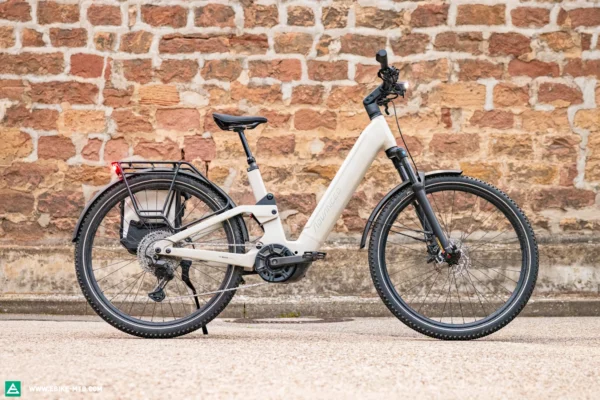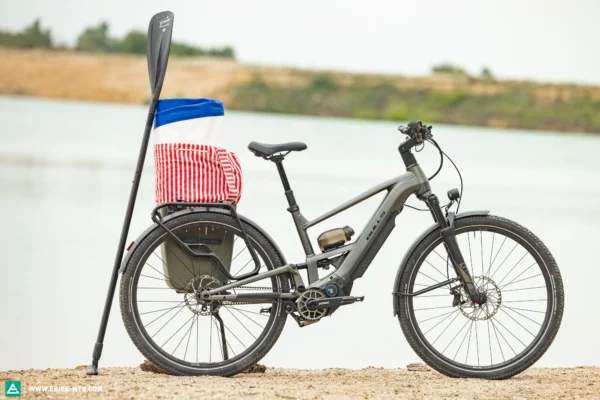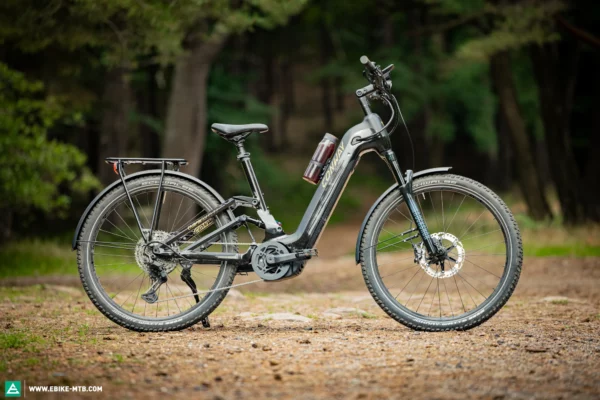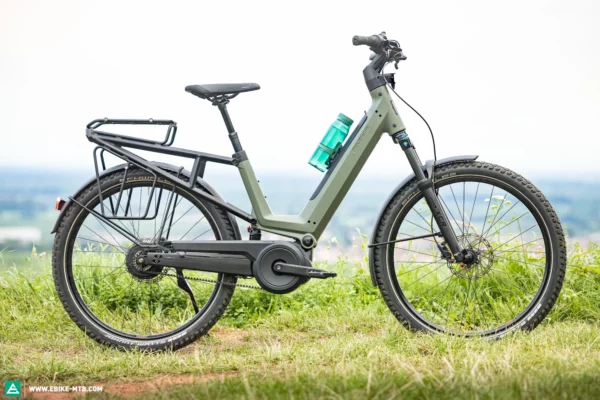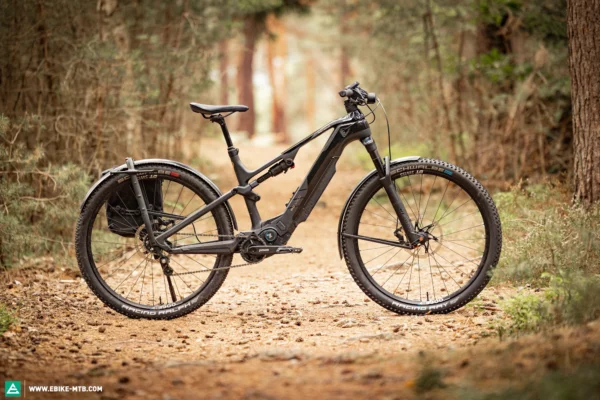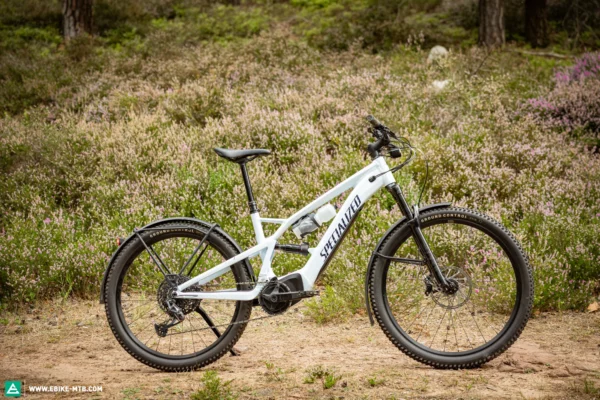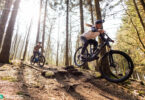One of the hottest trends among ebikes are eSUVs. Whether for everyday use or adventures, the best SUV e bikes are designed to do it all. Still, the differences within this category are huge. We tested 10 new and exciting SUV e bikes and tell you how to find the right bike for you and what to look for when buying.
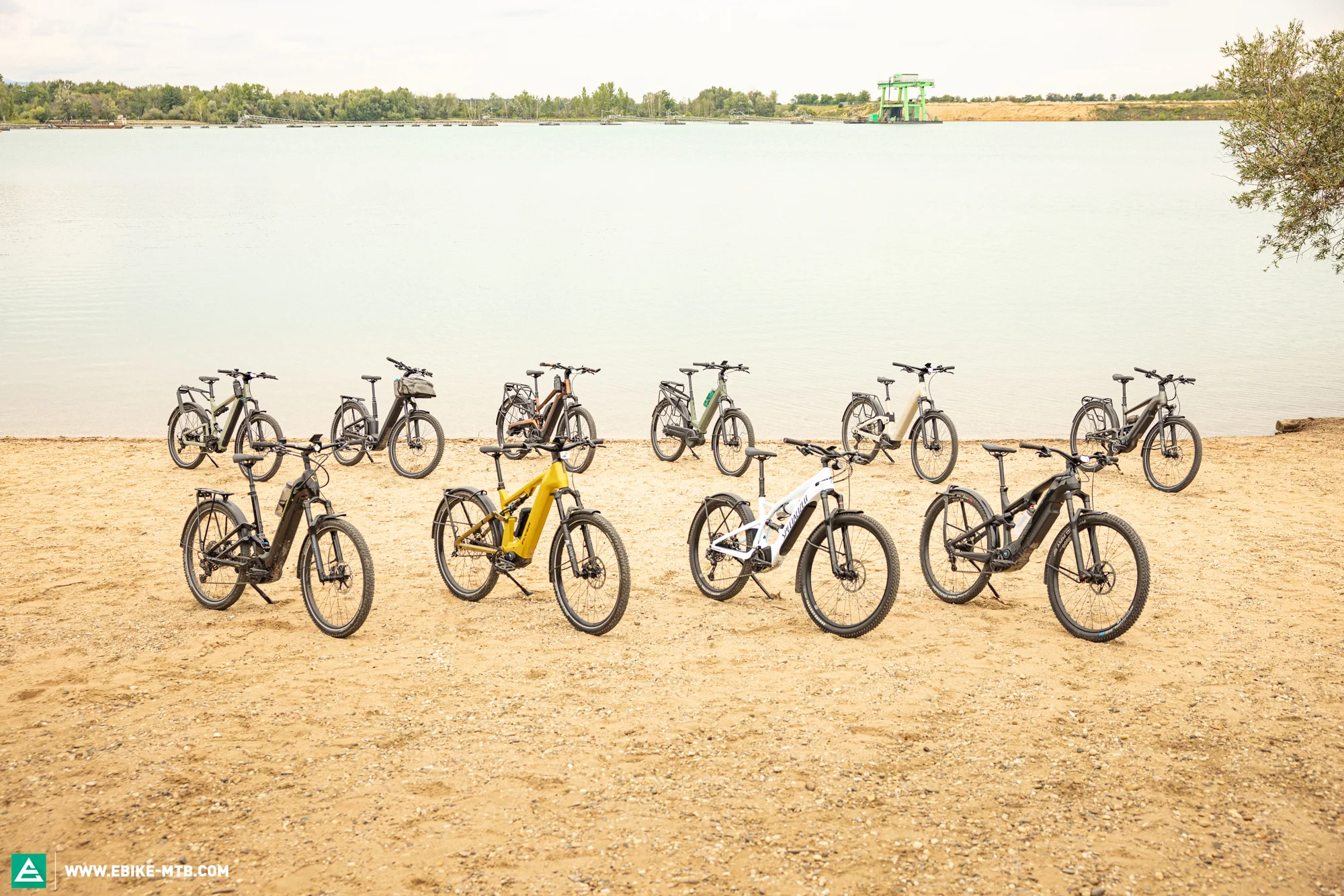
Cool, comfortable and ready for anything – that’s the essence of an SUV e bike. SUV e bikes are all the rage and their aim is to be your trusty companion no matter what’s on the agenda. While some of us have three different bikes in the garage, an SUV e bike is a single player that fits seamlessly into any setting. And there are more options on offer than ever before: Whether you want to fulfil everyday tasks, commute to work, ride in style around town or do our weekly shopping, SUV e bikes got your back and make a statement. Relaxing trips into nature or challenging alpine crossings, bike tours or surfing flow trails? With a host of comfort and safety features, and off-road tires, the ride itself becomes as memorable as the destination. Why not combine a bike tour with a picnic, fishing, stand-up paddleboarding on the lake, or even an overnighter under the stars? SUV e bikes also offer plenty of room for luggage.
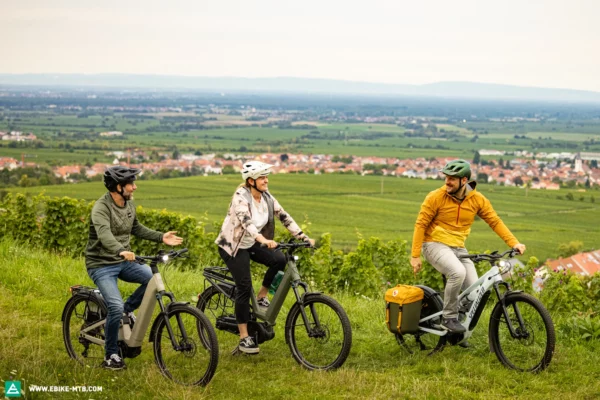

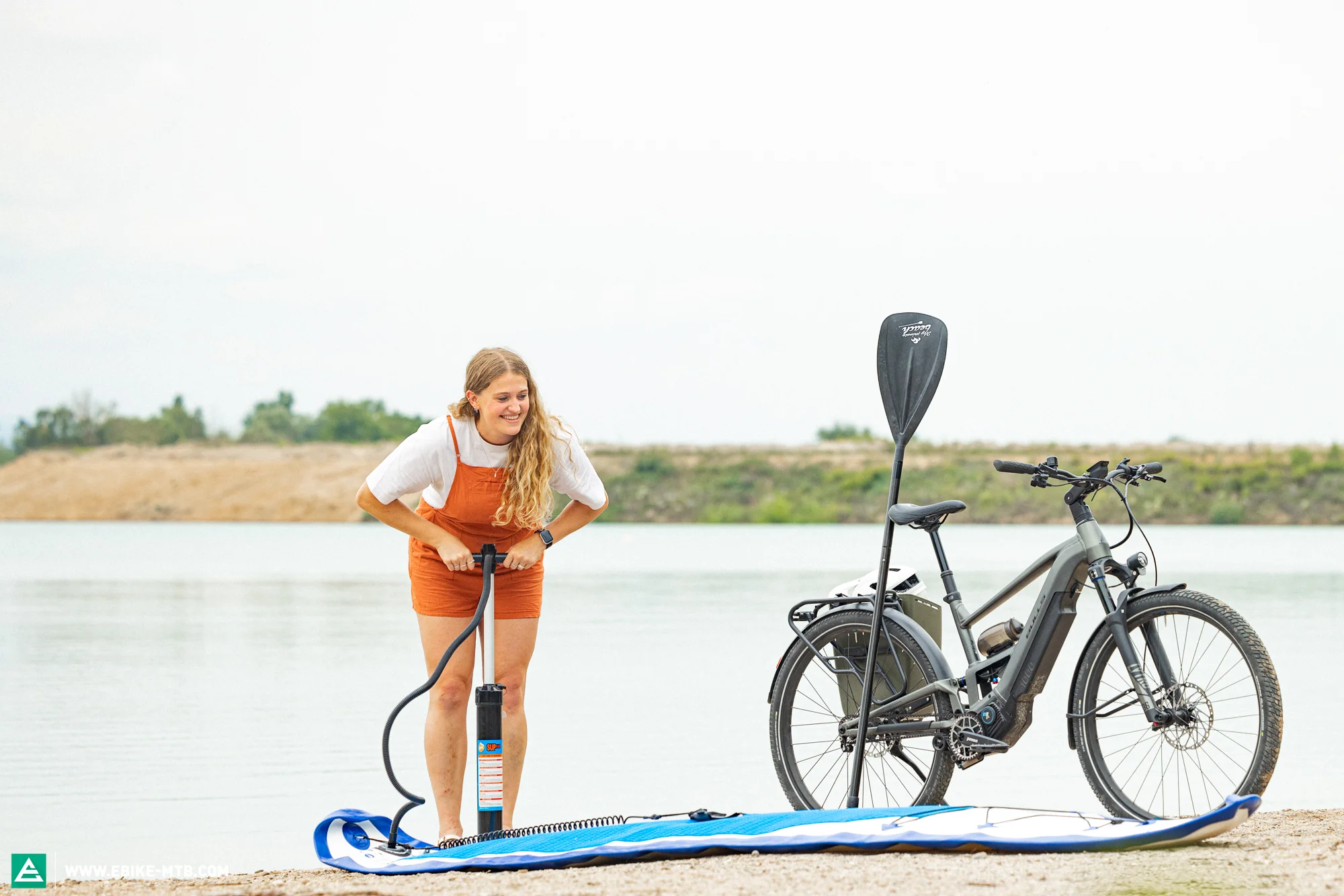
What is an SUV e bike?
A good SUV e bike is packed with features and functions. In the past, these bikes were based on either fully-equipped eMTBs or high-end trekking bikes. But the latest models have been designed from the ground up. And it shows. Good SUV e bikes are as versatile as a Swiss Army knife. And more than just practical: they embody sportiness, fun and adventure. But is that true for all of them? Some lean towards a sportier design with a classic top tube, while others prioritise comfort with step-through frames that offer a remarkably upright riding position. But step-through bikes offer more benefits than you might think and sometimes outperform their top-tube counterparts.

To find out what the 10 SUV e bikes are capable of, we not only tested them on a dedicated test track in direct comparison with and without a load, but also used them for daily commuting and, of course, took them on a variety of excursions and adventures. Equipped with stand-up paddleboards, tents and picnic gear, we couldn’t forget our office dog, Henry, who joined us in the dog trailer. From exploring lakes and vineyards to embracing everyday life – here we go!



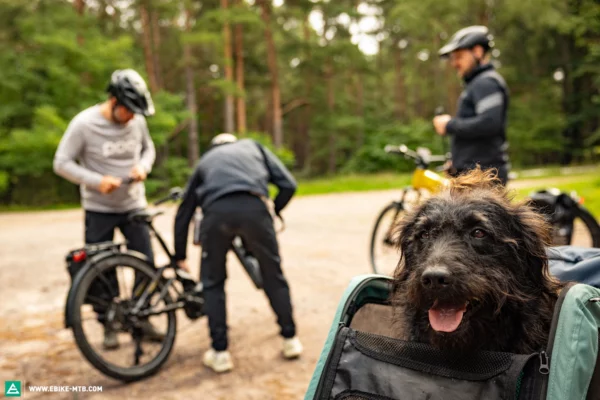
PS: If you have a dog and are thinking about taking him on adventures like these, take a look at our sister magazine DOWNTOWN. We tested 9 dog bike trailers in our group test.

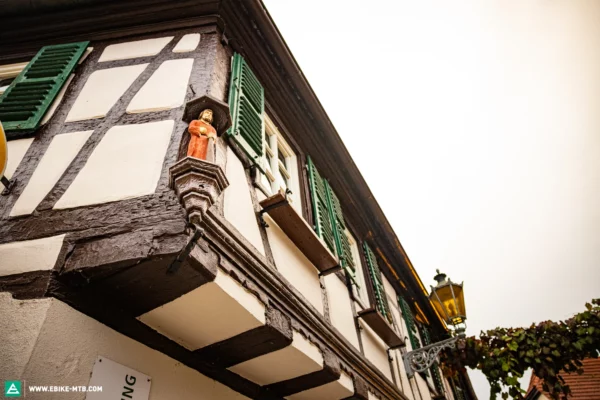
Our SUV e bike test field at a glance
From simple designs to extravagant looks, from understated to overstated – 10 SUV bikes from different manufacturers compete in our group test. The most expensive bike in our test field is priced at € 9,999, the cheapest at € 5,299.
The key to a good SUV e bike is good ergonomics and a plush suspension to ensure comfort and safety in everyday use as well as on longer rides. All of the SUV e bikes in our test field are full suspension bikes offering between 100 mm and 140 mm of travel. The kinematics of the rear triangle are designed primarily for absorbing individual bumps, such as kerbs, rather than for quick, successive hits on technical trails. Six have an adjustable cockpit and all have a dropper post in at least one version.
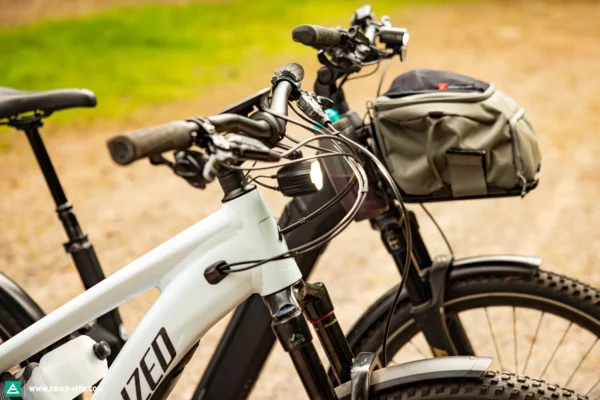
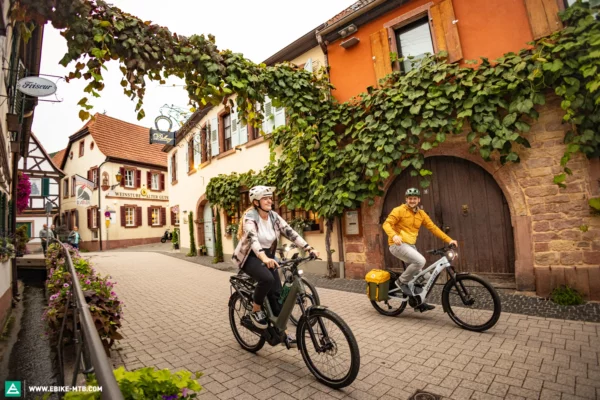
Our test bikes are fitted with the latest generation of electric motors. The new and innovative Pinion MGU E1.12 motor with integrated gearbox makes an appearance three times, once with a derailleur and twice with a low-maintenance belt drive. The popular all-rounder Performance Line CX motor from Bosch is used four times, the slightly weaker Performance Line variant on the Moustache J, the SyncDrive Pro2 on the GIANT and the 2.2 motor on the Specialized. Battery capacities on our test bikes start at 625 Wh, which is not a problem because range extenders are pretty much standard on SUV e bikes. GIANT fitted the Stormguard E+1 with a standard range extender, giving it a battery capacity of 1,050 Wh and thus making it the range king in the test.
Our test bikes also feature a wide variety of drivetrains. From the integrated gearbox of the Pinion MGU E1.12 motor with 12 gears and a range of 600% on the FLYER, BULLS and ROTWILD, to the Enviolo hub gears with a small range of 380%, to the classic 11- or 12- speed derailleurs from Shimano and SRAM with a range of 454–500%.

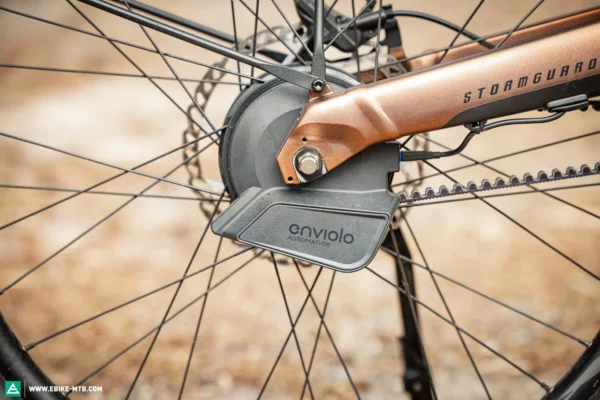
The full equipment is an essential part of any SUV e bike. But full equipment doesn’t mean the same thing for every manufacturer. After all, it’s in this area where the greatest differences can be found in terms of functionality and quality. Most bikes have mudguards that go all the way down, and unfortunately, almost all of them rattle when you ride off-road. The same goes for most of the kickstands. On three models, the kickstand even popped out when riding in technical terrain. As far as luggage racks are concerned, we have seen a number of variations: Some bikes, such as the FLYER Goroc TR:X 8.63, only have mounts for panniers on the side, while the Riese & Müller Delite 4 GT Touring, Specialized Tero X and CENTURION Country R3000i LX all come with front racks. On the CENTURION, the front rack also serves as a mounting point for a bottle cage or range extender. The racks on the Moustache, GIANT and R&M are part of the sprung mass, as opposed to the simpler designs like on the ROTWILD R.C1000. Instead of relying on a standard pannier system, the test field includes MIK, Ortlieb QL3.1, MonkeyLoad and AVS carrier systems. Sometimes manufacturers even integrated several systems into one carrier, like Moustache for example.
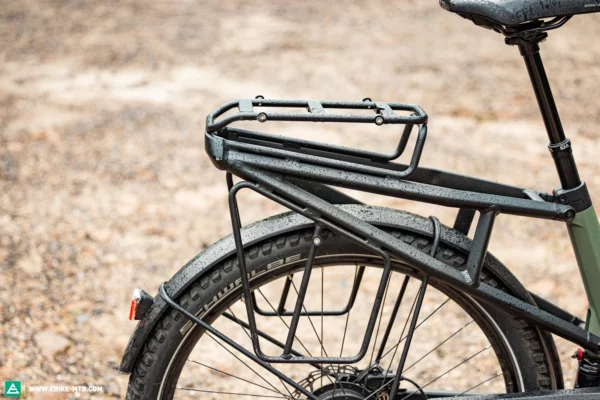
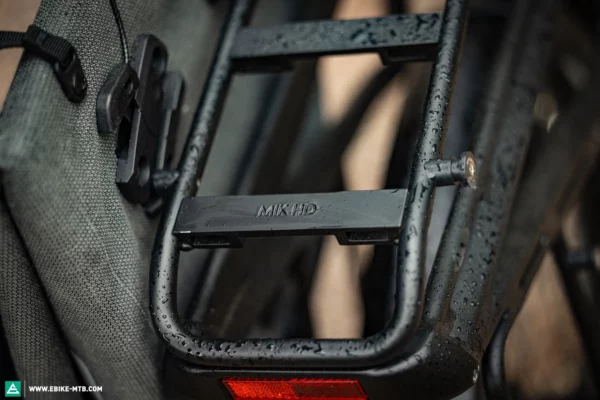
When it comes to lighting, some models have brake lights, including ROTWILD, Specialized, Riese & Müller and CONWAY. These four models, as well as the CENTURION and ADVANCED, also feature headlights with a high beam function.
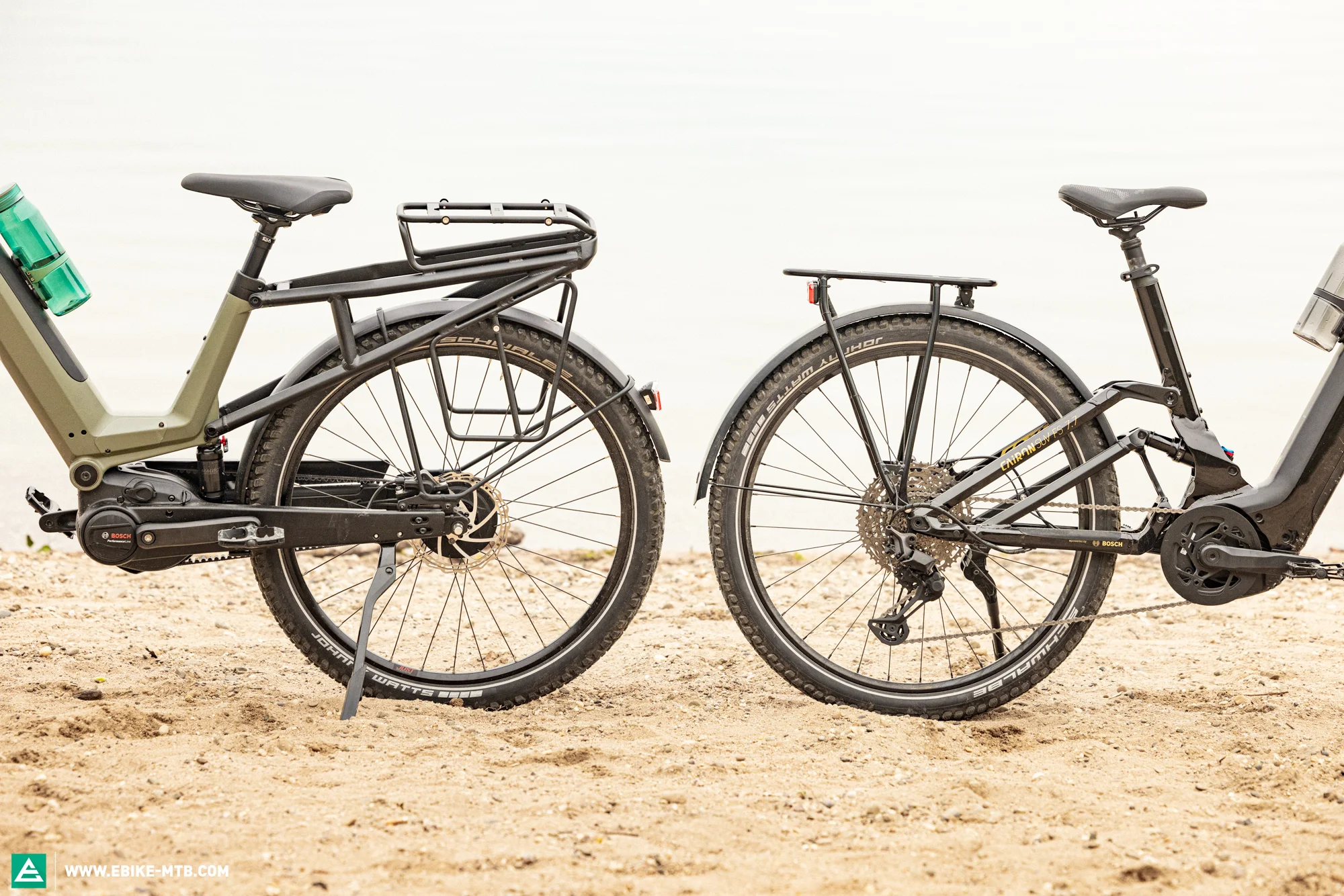
Of the 10 SUV e bikes we tested, four have step-through frames and six come with a classic top tube. If you’re still not convinced about step-through SUV e bikes, take it from us: They’re not just for ladies or older riders, the bikes we tested are great for all ages! You’ll also find that both carbon and aluminium frames are represented in our test field. A special shout out goes to Moustache and their exciting new manufacturing process: The frame of the Moustache J. All is 100% made in France using an aluminium casting process. This creates pros and cons that do not only affect the performance of the bike but the entire life cycle of the frame.
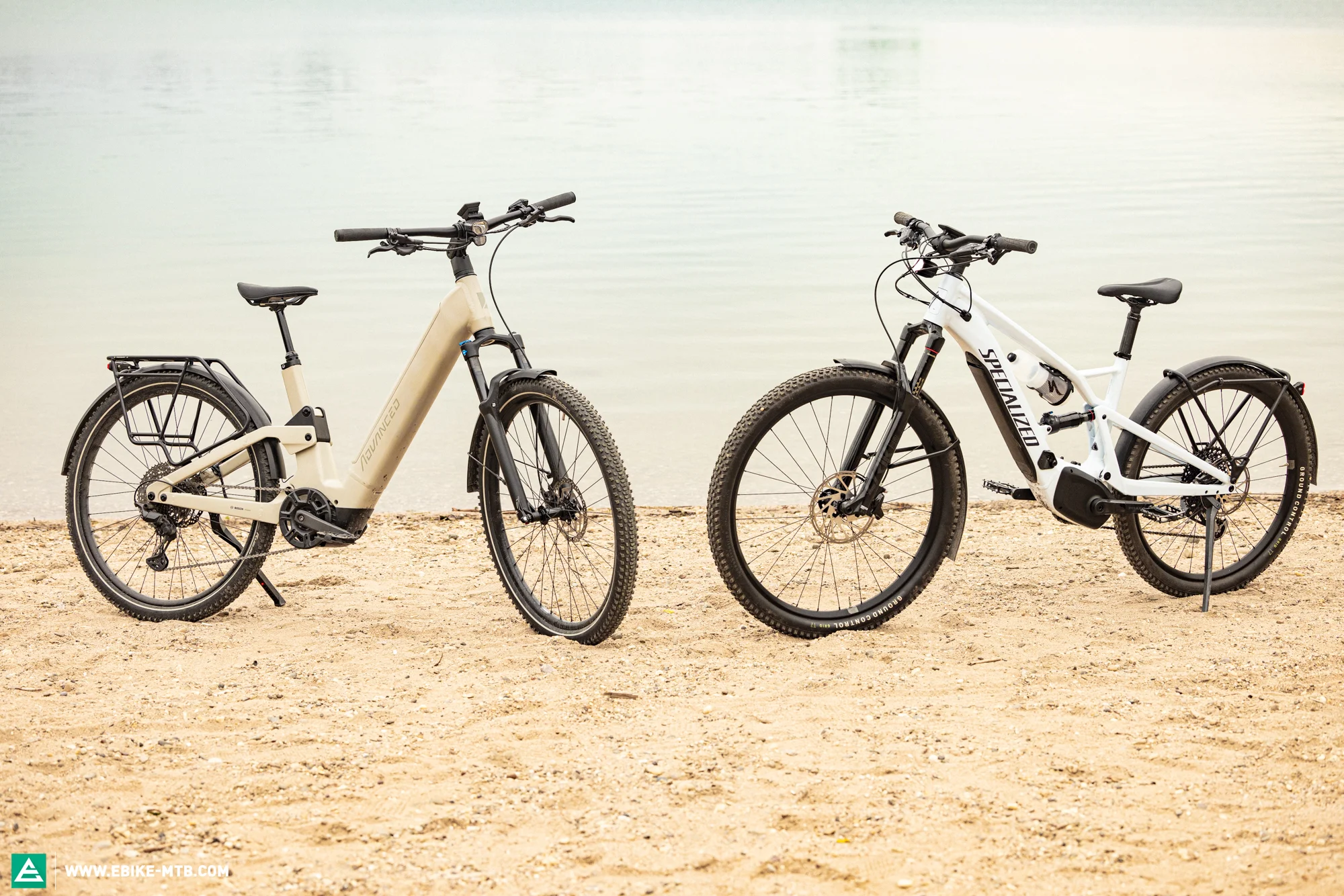
The weight difference between the heaviest and lightest of the 10 SUV e bikes in our group test was more than 8 kg, with the ROTWILD carbon bike being a flyweight at 25.6 kg compared to the hefty GIANT weighing in at 34.1 kg.
Last but not least, SUV e bikes carry a certain aura. Not everyone attaches the same importance to this, but it’s a fact that our test field includes brands with varying degrees of prestige, a wide range of designs and, of course, numerous technical features that can make for interesting conversations in the pub.

| Brand | Bike | Frame | Weight (kg) | Motor system | Price | Link |
|---|---|---|---|---|---|---|
| ADVANCED | Trekking Pro FS Wave | step-through | 32,1 kg | Bosch Performance Line CX | € 5.499 | Click for review |
| BULLS | Vuca EVO FSX 1 | classic | 29,9 kg | Pinion MGU E1.12 | € 7.499 | Click for review |
| CENTURION | Country R3000i LX | step-through | 29,4 kg | Bosch Performance Line CX | € 5.599 | Click for review |
| CONWAY | CAIRON SUV FS 7.7 | step-through | 28,1 kg | Bosch Performance Line CX | € 5,299 | Click for review |
| FLYER | Goroc TR:X 8.63 | classic | 29,1 kg | Pinion MGU E1.12 | € 8.999 | Click for review |
| GIANT | Stormguard E+ 1 | classic | 34,1 kg | GIANT SyncDrive Pro2 | € 7.999 | Click for review |
| Moustache | J. All | step-through | 32,3 kg | Bosch Performance Line | € 6.199 | Click for review |
| Riese & Müller | Delite 4 GT Touring | classic | 30.8 kg | Bosch Performance Line CX | € 7,629 | Click for review |
| ROTWILD | R.C1000 TOUR | classic | 25,6 kg | Pinion MGU E1.12 | € 9,999 | Click for review |
| Specialized | Turbo Tero X 6.0 | classic | 26,5 kg | Specialized 2.2 | € 6,200 | Click for review |
| Ø | 29,8 kg | Perfion ProSync E2.2 (Thank you, ChatGPT 😉 ) |
€ 7,092 |
Our test riders
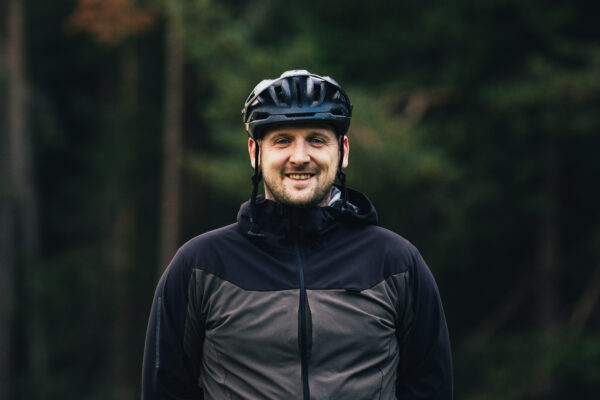
Rudi enjoys day trips to the Allgäu and likes conquering the occasional peak, which is why he wants a large battery, preferably with a range extender. Due to back problems, good ergonomics on the bike with a comfortable riding position are essential, too.
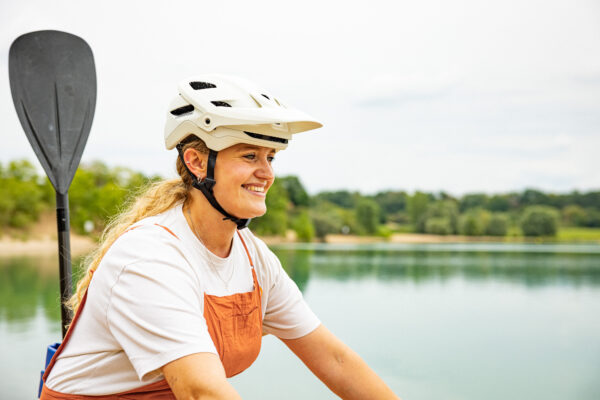
Antonia enjoys cycling to work. To do so she must navigate through the city, climb a steep road out of it, and carry on until she reaches the woods.
On long weekends, she enjoys bikepacking tours, which must include a stop by a lake, as these are rare in Stuttgart.
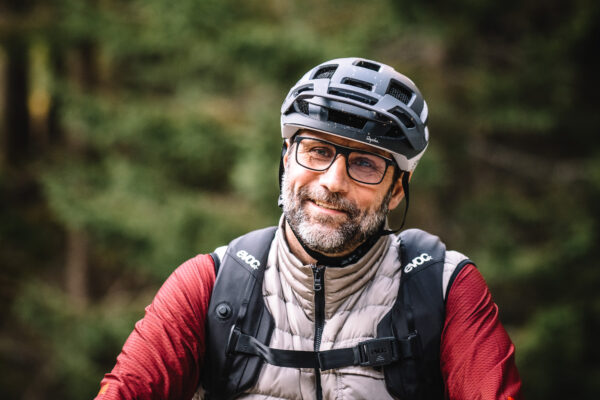
He’s got an electric SUV on four and two wheels. But Erik prefers taking the bike and leaving his Porsche Cayenne parked at home. He enjoys long rides that start on his doorstep, and doesn’t leave the house for anything less than 30 km.

Manne regularly takes his bike to go shopping at the Saturday market, so he needs a lot of storage space and bags. He also likes taking his dog Henry along for the ride, so his bike must be capable of pulling a trailer and have a large battery because of the extra weight.
SUV e bike vs trekking ebike – What’s the difference?
SUV e bikes are the better trekking ebikes. Full stop. Thanks to continuous development, they’re becoming increasingly capable and versatile, making them the best bike for everyday life and adventure. Analogue trekking bikes were tailored for a clearly defined purpose: providing an efficient means of travelling in leisure time. They had skinny tires for minimal rolling resistance, and a dynamic riding position for optimised pedalling efficiency. If they had suspension, then with very short travel, so as not to add unnecessary weight or end up bobbing when you pedal.
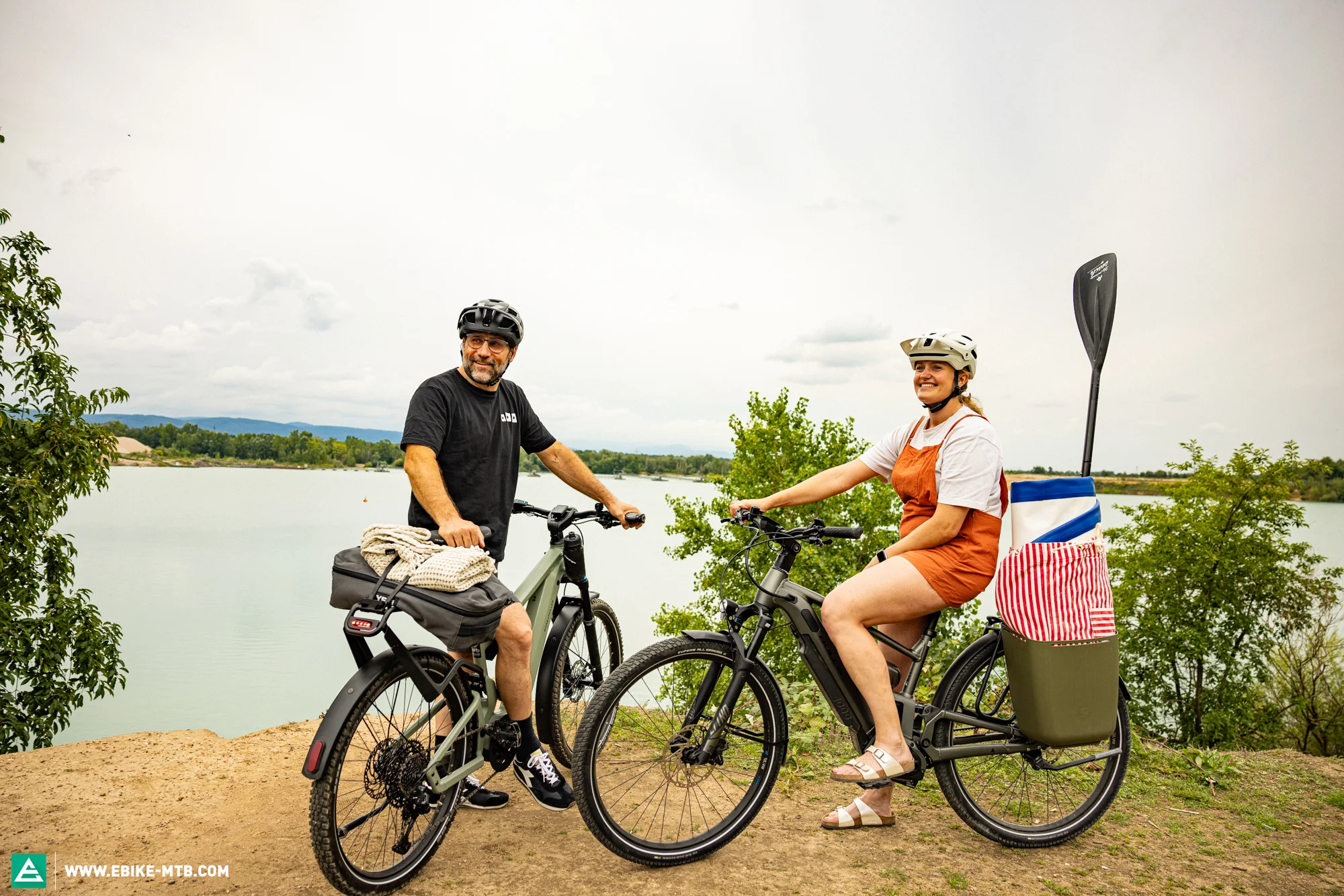
With the addition of an electric motor, that’s all changed. More people started riding, new use cases emerged, and we saw the emergence of new technological possibilities. At first, however, bike developers didn’t grasp the potential of electric motors. Instead, they simply retrofitted existing trekking bikes with batteries and motors, without adapting and upgrading the components to the increased loads – they simply overlooked the new ways of using these bikes. It took a while for the industry to understand that efficiency isn’t all that important when you’ve got a motor, and that what turns conventional trekking bikes into true all-rounders are wider off-road tires, powerful brakes, capable suspension, and versatile bike design.
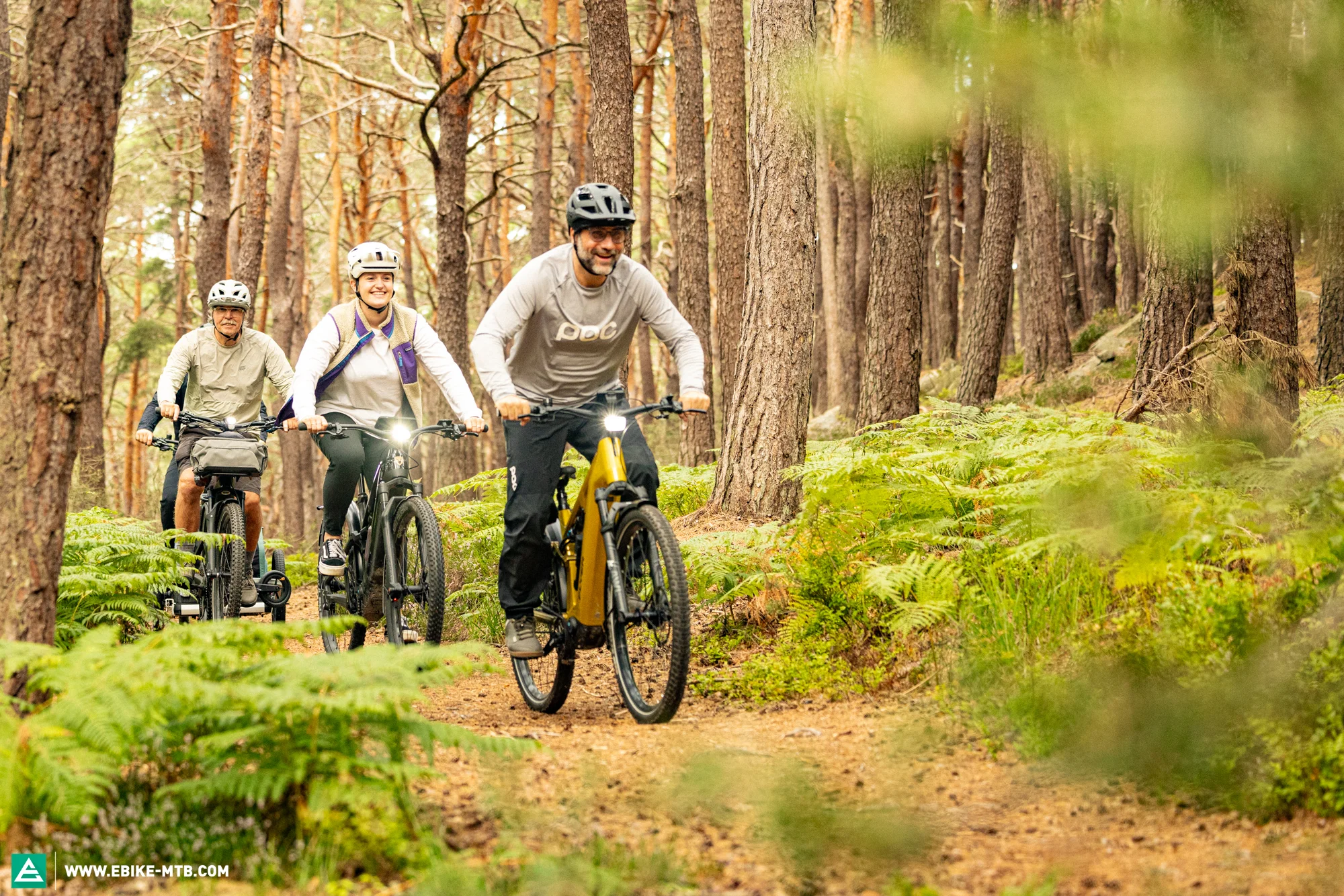
If you use the main battery to power not just the motor but also navigation systems, lights and anti-theft tracking devices, ebike systems open up endless possibilities that go far beyond pedal assist.
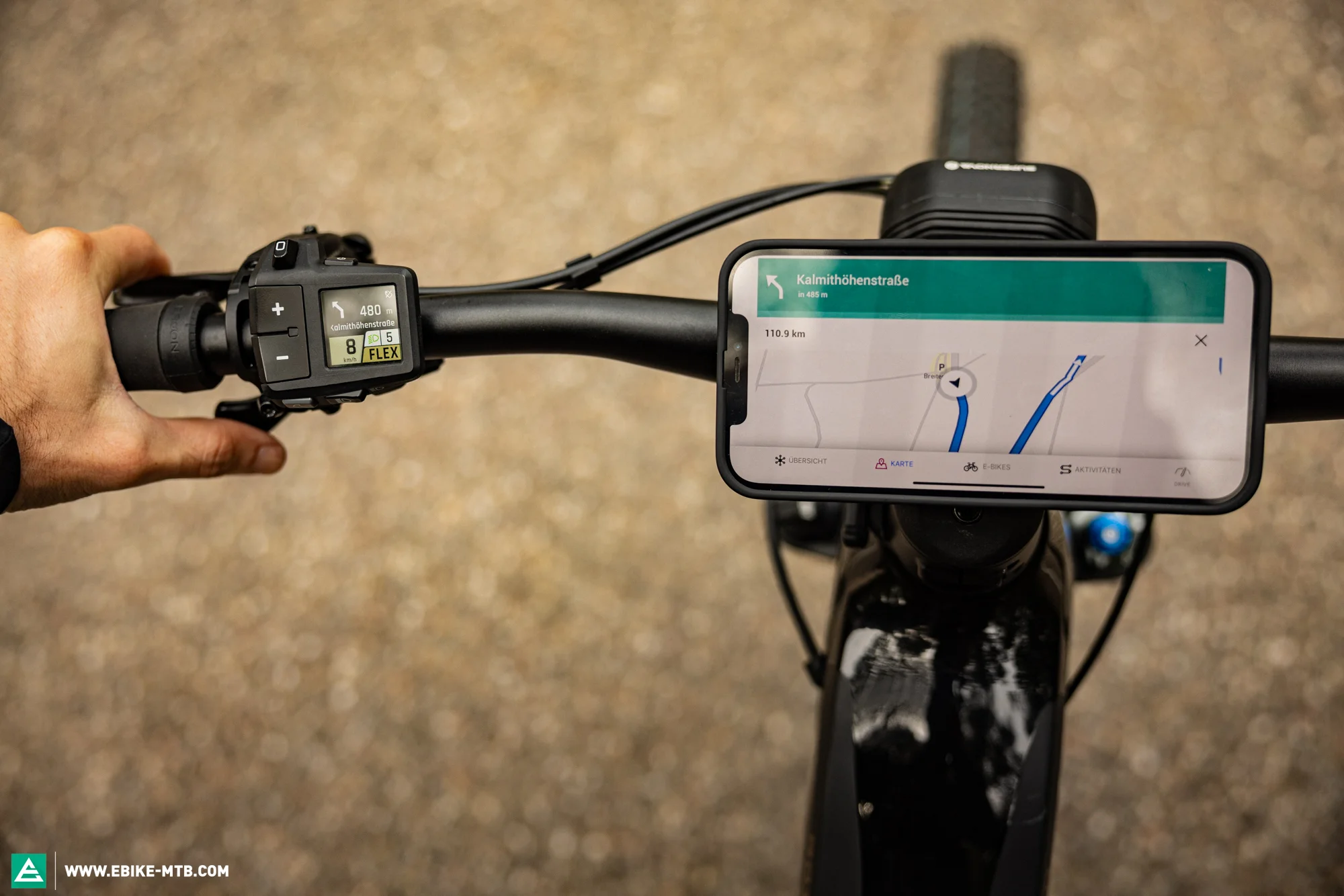
Thus, the SUV e bikes now take their deserved place as the go-to electric trekking bikes. Welcome to a new era: SUV e bikes are fun to ride right from your doorstep and capable of tackling anything you can throw at them. An eSUV realises the full potential of an ebike motor while combining the best of three categories: city, trekking, and eMTB. The term SUV e bike sounds cool, it’s in keeping with the times, and turns the world of trekking bikes upside down. They are more than just trekking bikes because they’re well thought out – developed from the ground up. They’re more versatile, offer maximum long-distance comfort and everyday practicality. They’re also specced with high-quality components and a comprehensive list of accessories.
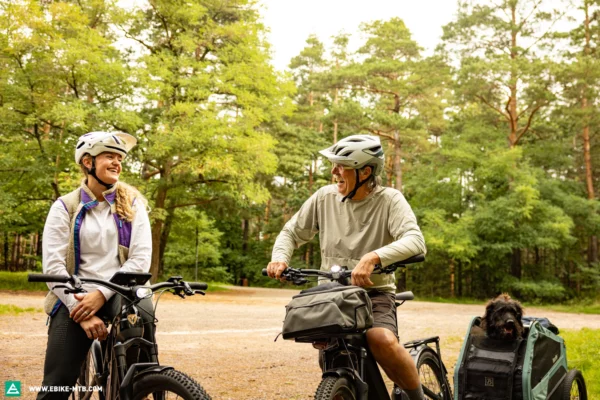
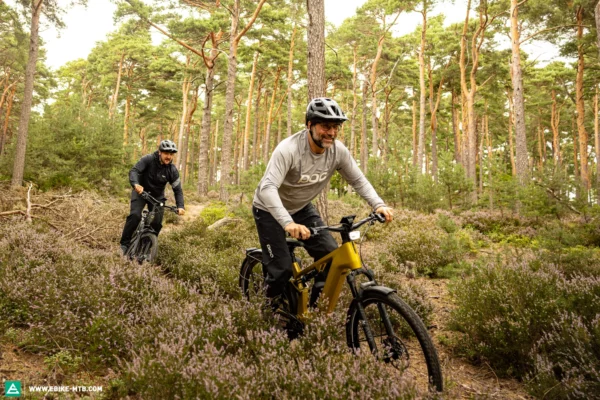
The one bike to do it all. An active and fun way to explore the outdoors, sunbathing at the water’s edge, or enjoying a cosy campfire in the mountains. In day to day life, SUV e bikes serve as pack mules or commuters, for which they’re just unbeatable. Versatility is king! A fully-equipped eSUV leaves nothing to be desired.
Which is the best SUV e bike for you?
Finding the best SUV e bike for you is a two-step process: First, you should take a closer look at your needs as a rider, and then at what you want the bike to offer. So, start by asking yourself: Where and how do you ride most often? What do you typically transport? Do you mainly ride on asphalt roads or do you venture off-road and onto easy trails? Do you exclusively use the bike in the city? Are you the only one riding the bike or will you share your new favourite toy with other family or household members? And finally, what do you want to achieve with the bike? Is it more about daily commuting or adventure and travel?


Once you’ve clarified all that, it’s time to go to step two and consider the traits of the various SUV e bikes on offer and whether they meet the demands of your lifestyle and needs. What is the bike’s character? What sets it apart and what unique features does it have? What is the SUV e bike capable of? Before we get lost in the technical specs, we’ll look at the intended use for which you want to buy the bike. There’s no such thing as the perfect SUV e bike – it’s all about what’s right for you. We’ll get into the technical aspects that you should look for. However, versatility is key for eSUV bikes, and you generally can’t go wrong with a bike that can cater to a wide range of use cases. That way the bike can grow with you once the bug has bitten and you use it more often and in more ways than you initially intended.
The SUV e bike should have good handling that instils confidence, and makes the bike comfortable and fun to ride. This includes easy steering, cornering grip, braking performance, and stable handling with luggage. The suspension, riding position, noise level, and cockpit ergonomics also play a role. Furthermore, you want a powerful motor, and agile handling. Maintenance should be easy, too, with easily accessible components and batteries. In terms of the accessories, you want sturdy mudguards, a robust stand, bright lights, a high-quality luggage rack, and versatile mounting options for bags. Finally, the design and build quality should be appealing, including the welds, tolerances, and the seamless integration of components. You want a bike that also looks good, don’t you?
What should you look for in an eSUV?
If you know how you intend to use your SUV e bike, it’s time to consider the technical specs required, which is the second and more involved part of finding out which bike is the best for you. As always, there are quite a few things to keep in mind. To help you make the right decision, we’ll tell you what to look for on your new eSUV…
Motor
While it always comes down to the bike as a whole, the motor has a decisive influence on the bike’s character. Manufacturers tend to spec SUV e bikes with full power motors. Lightweight and discreet integration are not that important. By the way, we recommend checking out our comprehensive motor group test if you want to brush up on your motor know-how. With full power motors, the brands promise to take a large portion of the load off the rider, making easy work of hauling heavy loads and riding in hilly terrain. Those who like trekking in the mountains or commute in hilly Stuttgart will appreciate this! That’s why all but one of the bike brands on test rely on top-end motors. When thinking of the motor, we also consider things like how it’s integrated into the bike, its app and connectivity features, as well as the controls and display. Our test field includes 4 different motor manufacturers: Pinion, Bosch, Specialized, and GIANT. But which motor is best suited for whom or for what?
The Pinion motor MGU E1.12 is a good choice for trekking, long distances, and commuters. The integrated gearbox can withstand all weather conditions and if you use a belt drive instead of chain, it requires minimal maintenance. In addition, the Pinion motor doesn’t need a cassette or a derailleur, so you can forget about cleaning and lubing your chain, or adjusting the shifter if you knock your derailleur a little too hard.. With a Pinion motor, you’ve just got one less thing to worry about.
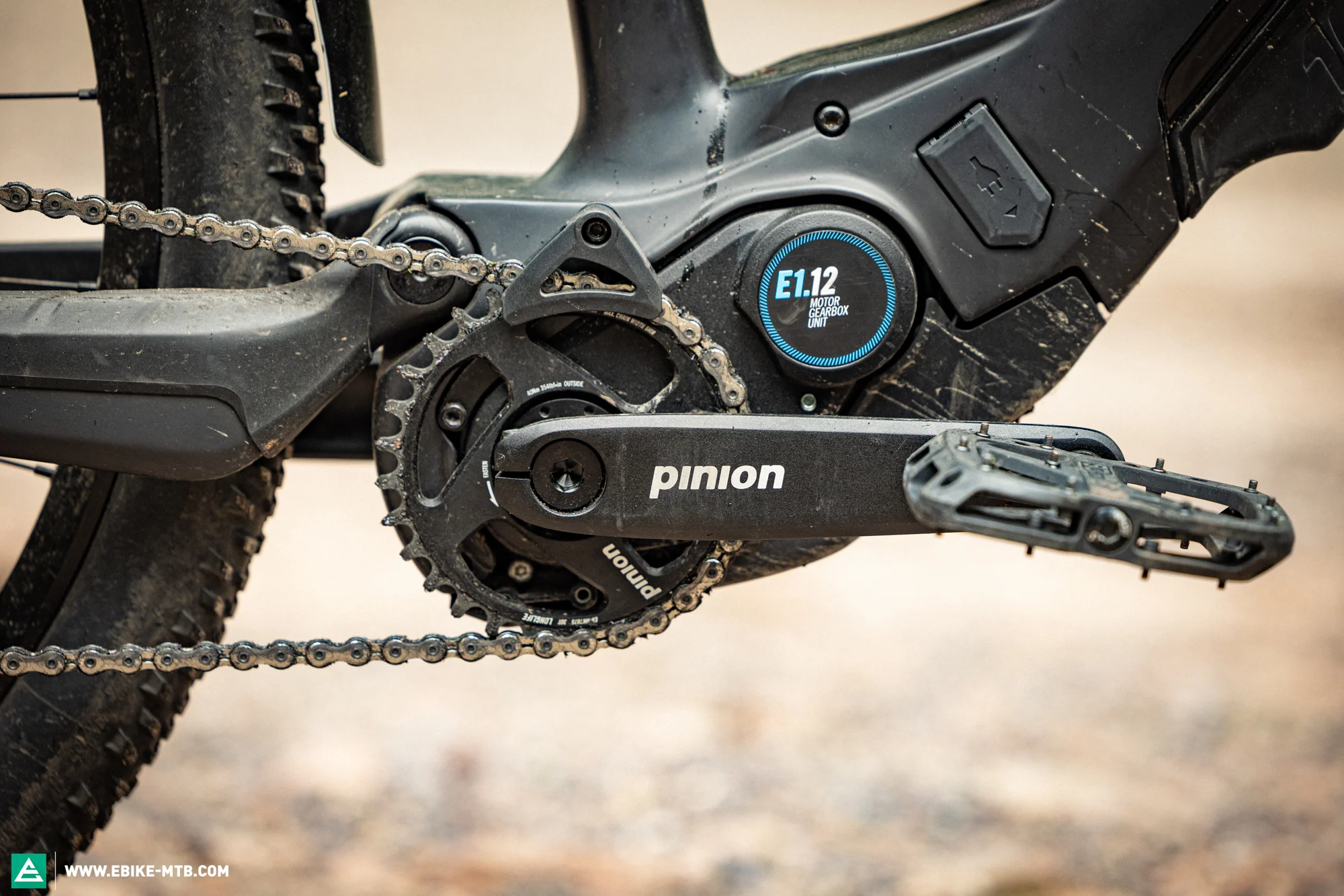
The Performance Line CX is the big and powerful all-rounder from Bosch. It’s powerful yet easy to control thanks to the excellent way that it’s tuned. The new Smart System also offers comprehensive connectivity features through the eBike Flow app, such as theft protection and navigation. Moustache also opt for a Bosch motor, but chose the weaker Bosch Performance Line version. This motor isn’t quite as powerful, so Moustache must pay more attention to achieving the appropriate range and gear ratios on the drivetrain.
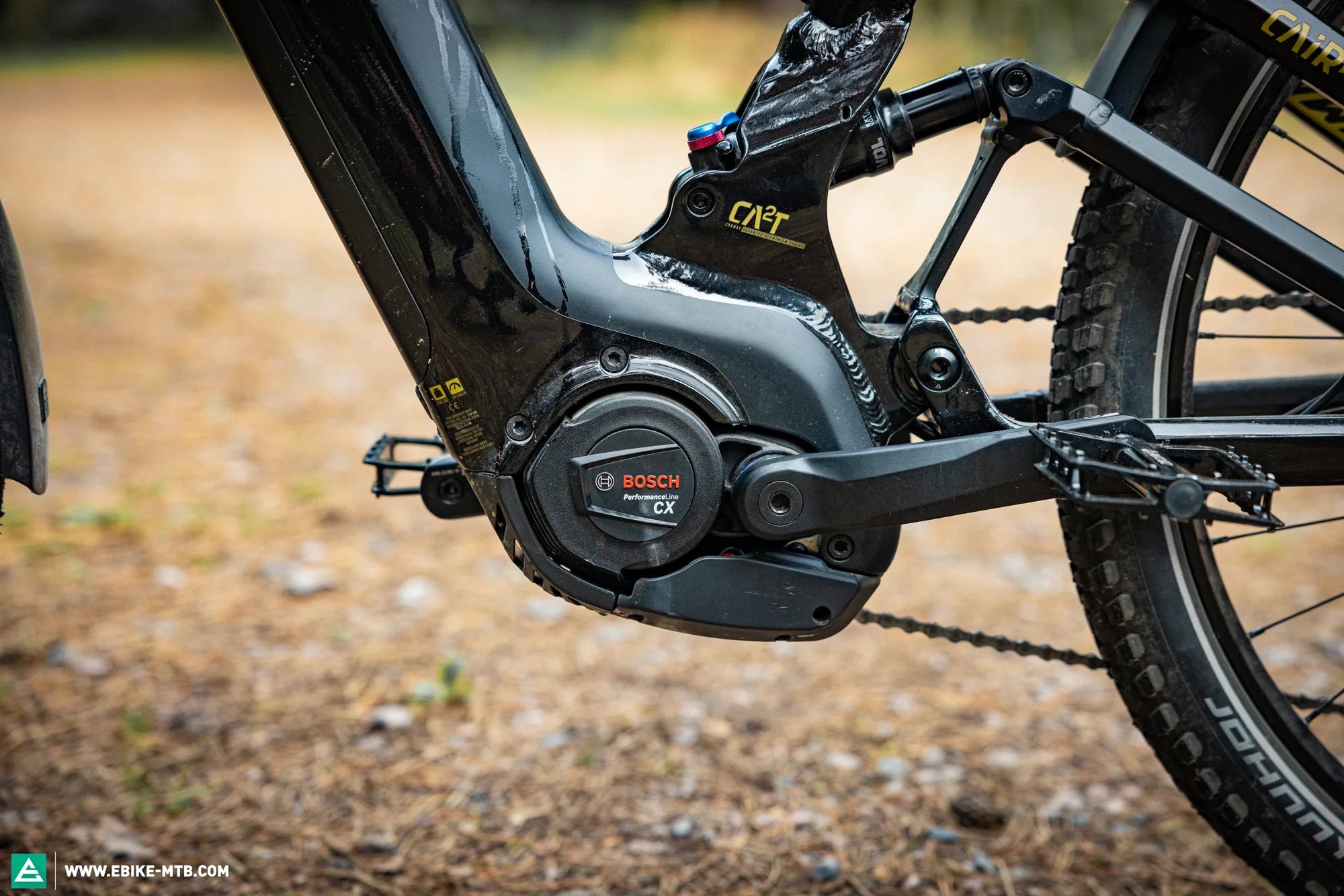
The Specialized 2.2 is quiet, sensitive, and cleverly integrated into the in-house ecosystem: it doesn’t just cut a fine figure in the Levo eMTB with which it was launched, but also features in the versatile Tero X and delivers a natural riding experience with an excellent performance.
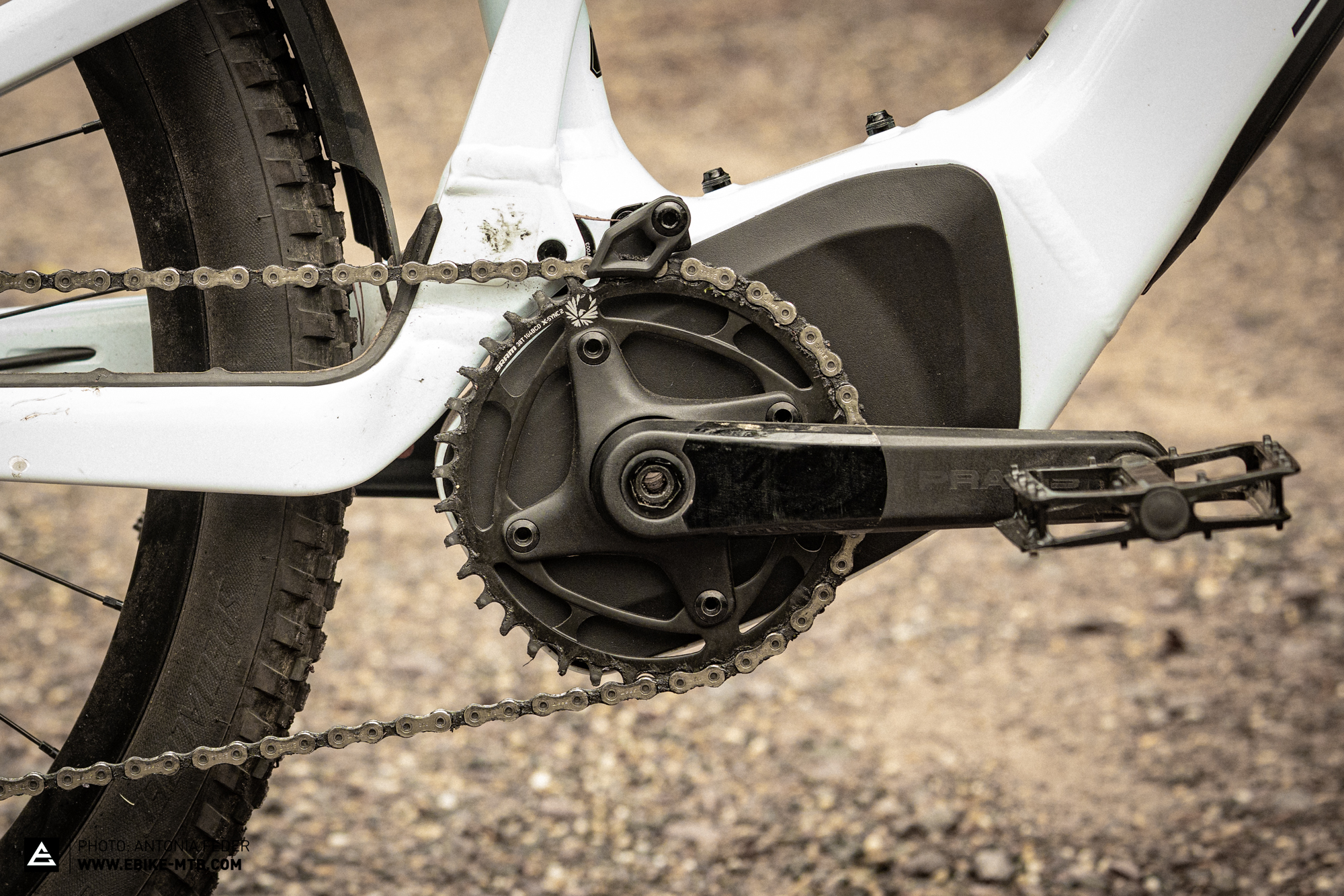
The GIANT SyncDrive Pro2 motor was originally designed for the more aggressive eMTBs in the GIANT portfolio and, like the Specialized motor, it is also fully integrated into an in-house ecosystem from GIANT, including a navigation function and range extender compatibility. It’s got plenty of power. And, in certain situations, it requires an experienced rider to handle the direct power delivery.
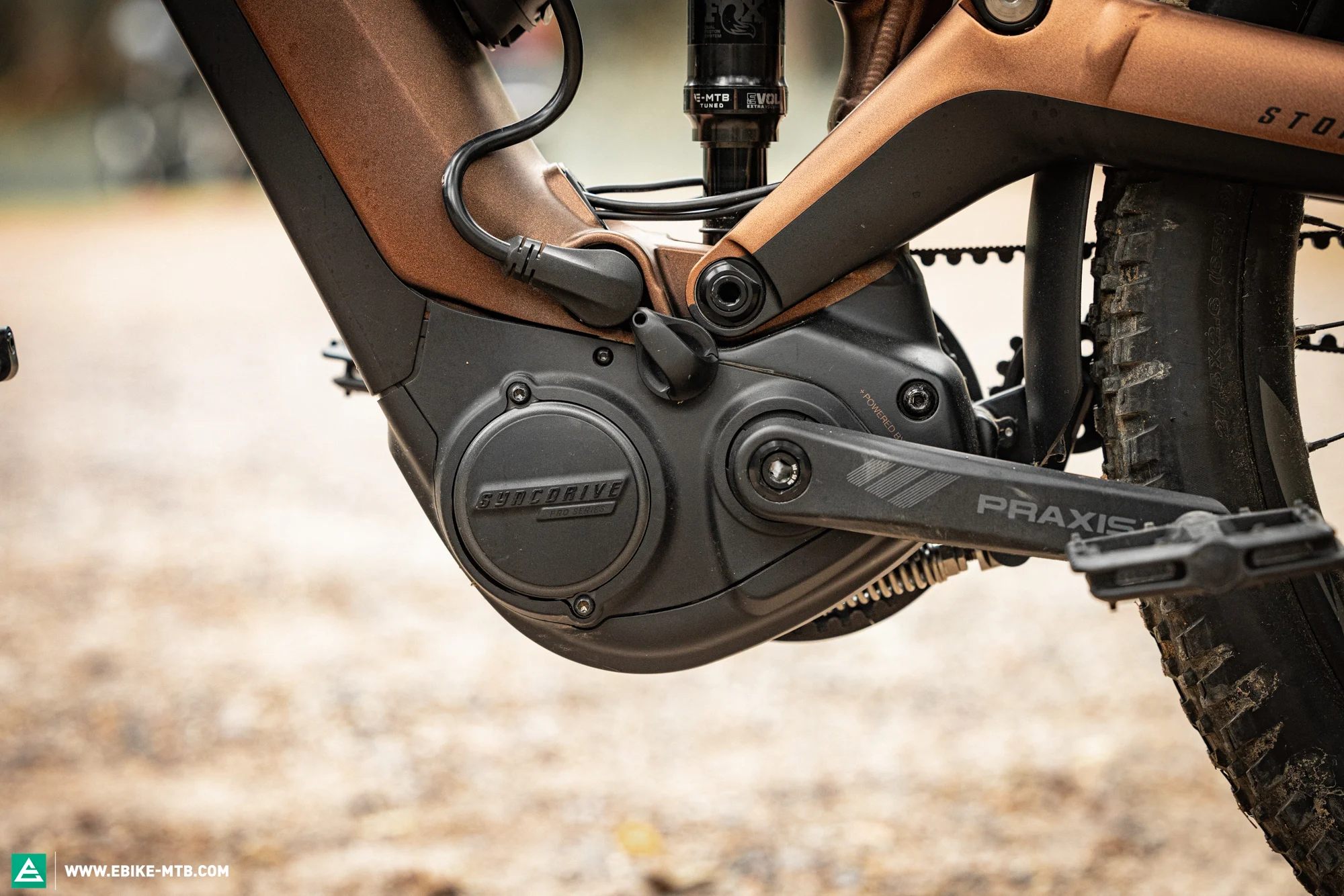
Battery concept
As with the motor, the ideal battery concept depends on how and where you plan to ride the bike. All of the integrated batteries on test are removable, which offers advantages when transporting the ebike or taking the battery indoors to recharge. Some of the batteries have carrying handles, such as that on the CENTURION, which is convenient. But here, too, there are big differences in terms of the battery covers, locking mechanisms, the accessibility of the charging port, or the battery in general. On the ROTWILD, BULLS and FLYER, for example, the batteries form part of the down tube. If you want to transport these SUV e bikes on a hitch rack but prefer to keep the battery in the boot, there are large openings in the frames through which dirt can get into the ebikes while driving.
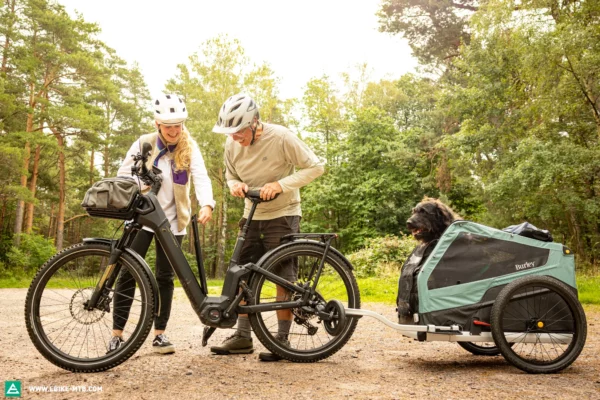
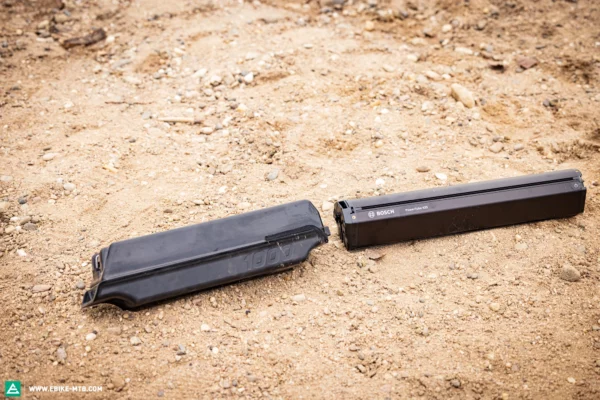
With modular systems, the battery capacity can be expanded with a range extender, which is an external battery that can be connected to the main battery. Extenders vary in size and capacity depending on the manufacturer, from the 250 Wh PowerMore range extender that’s shaped like a water bottle to the 535 Wh brick on the FLYER. Increasingly, bike brands are also giving consumers the option of choosing the capacity of the main battery, including ADVANCED, BULLS, Moustache, and Specialized. It’s up to you to find out how much battery capacity is necessary for your SUV e bike lifestyle. If you typically ride short distances during the week but enjoy going on extended tours at the weekend, you can go for a bike with a small main battery and expand it with a range extender come weekend. To protect against theft, the batteries of all the SUV e bikes on test are secured with a key, making them harder to remove.
By the way, FIT have a cool feature that allows you to choose between fast and normal charging. They also have a long-life mode, which stops charging the battery once it’s reached 80%. GIANT offer a similar feature via their smart charger. If you store your bike in the basement over the winter, you will extend the life of your battery if you don’t store it in a deeply discharged or fully charged state.
Drivetrain and gear range
Now that you know which motor and battery capacity suits your needs best, you should also consider how well it harmonises with the drivetrain. In particular, you’ll want to think about the gear range. The gear range on the Moustache J. All is too small and the gear ratios are too high for the motor, which is the weakest on test. So there’s a chance you’ll grind to a halt on some steep climbs. The FLYER, on the other hand, has a very powerful motor with a wide-range internal gearbox, combined with a large sprocket at the rear that’s the same size as the chainring up front. It makes easy work of even the steepest climbs, but you tend to run out of gears at higher speeds on flat terrain.
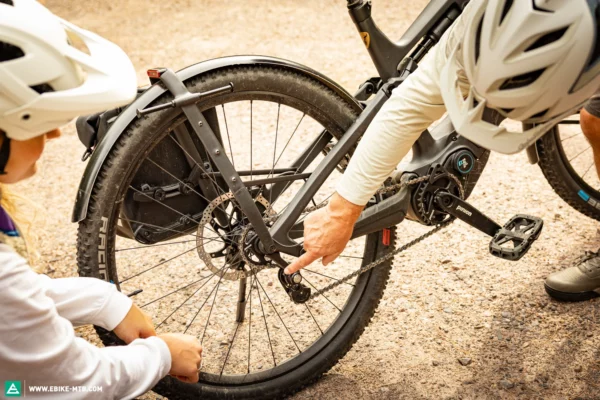
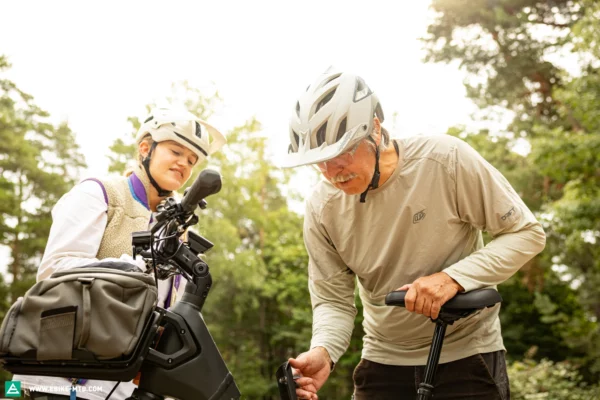
Integrated and range-based navigation
Manufacturers often offer additional functions that, if implemented well, increase the bike’s functionality significantly. Navigation that factors in the motor’s energy consumption based on the topography and gives you an estimate of the range can be very helpful. Unfortunately, navigation systems aren’t getting integrated like they used to with displays like the Bosch Nyon. Often, you have to pair the system with your smartphone or an additional GPS navigation device. But it’s better to have a poorly integrated navigation system than no navigation system at all, in case your smartphone battery dies. Unfortunately, none of the navigation systems in our SUV e bike group test were suitable for off-road use. The three Pinion bikes with the FIT system and GIANT only offer turn-by-turn instructions in the form of arrows, while Bosch at least provide a schematic road layout. ROTWILD rely on an SP Connect mount and a USB-C charging port, so you can easily attach your smartphone to the handlebar and keep it charged. On the Bosch systems, you can replace the Kiox 300/500 display with the SmartphoneHub holder without using tools. This allows you to charge your smartphone from the ebike battery while riding. It also lets you control the smartphone via the handlebar remote, providing fully-functional navigation with a detailed map.
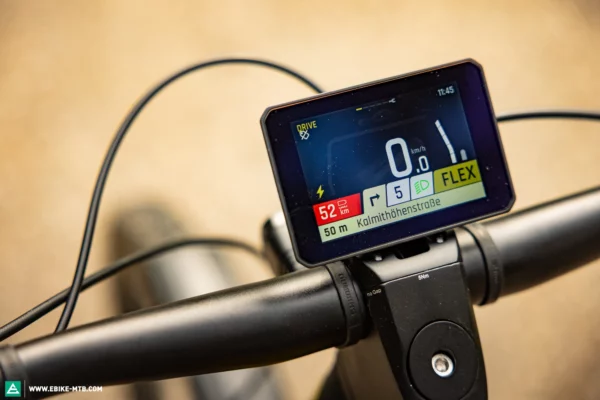
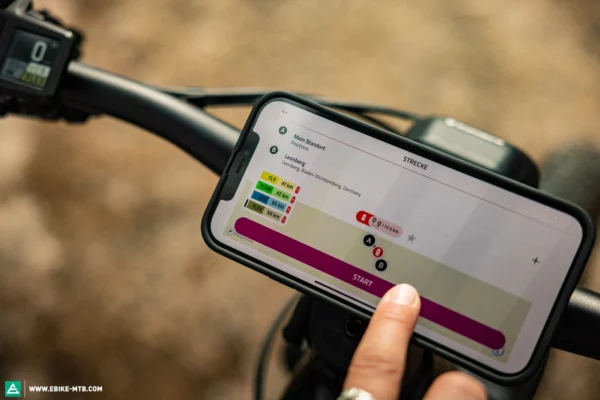

Tires
28″ is dead – at least when it comes to SUV e bikes. Nothing characterises city bikes or old-fashioned trekking bikes as much as this antiquated tire size. But it’s not the nominal diameter itself that matters: four of the bikes on test roll on larger 29″ wheels, five on smaller 27.5″ wheels, and one on mixed 29″ and 27.5″ wheels front and rear. The 27.5″ and 29″ wheel sizes are borrowed from the eMTB segment, which means that you can get wider and more aggressive tires for more comfort and traction in all riding scenarios. Which of the brands have gotten the tires right? Clearly, the brands in our SUV e bike group test have understood the benefits of wide, knobby tires! At 2.1″, ADVANCED spec the skinniest tires, and the Supero AllGround on the BULLS are the slickest. Gone are the days when you had to worry about getting your tires stuck between tram tracks. Although ROTWILD can keep up with the competition when it comes to tire choice, they’re the only ones to spec different front and rear tires, fitting a fast rolling yet relatively slick tire on the rear. This tire pairing doesn’t live up to the bike’s potential, because it can actually be ridden rather actively. With slightly more aggressive tires, you could get more off-road performance on muddy trails.
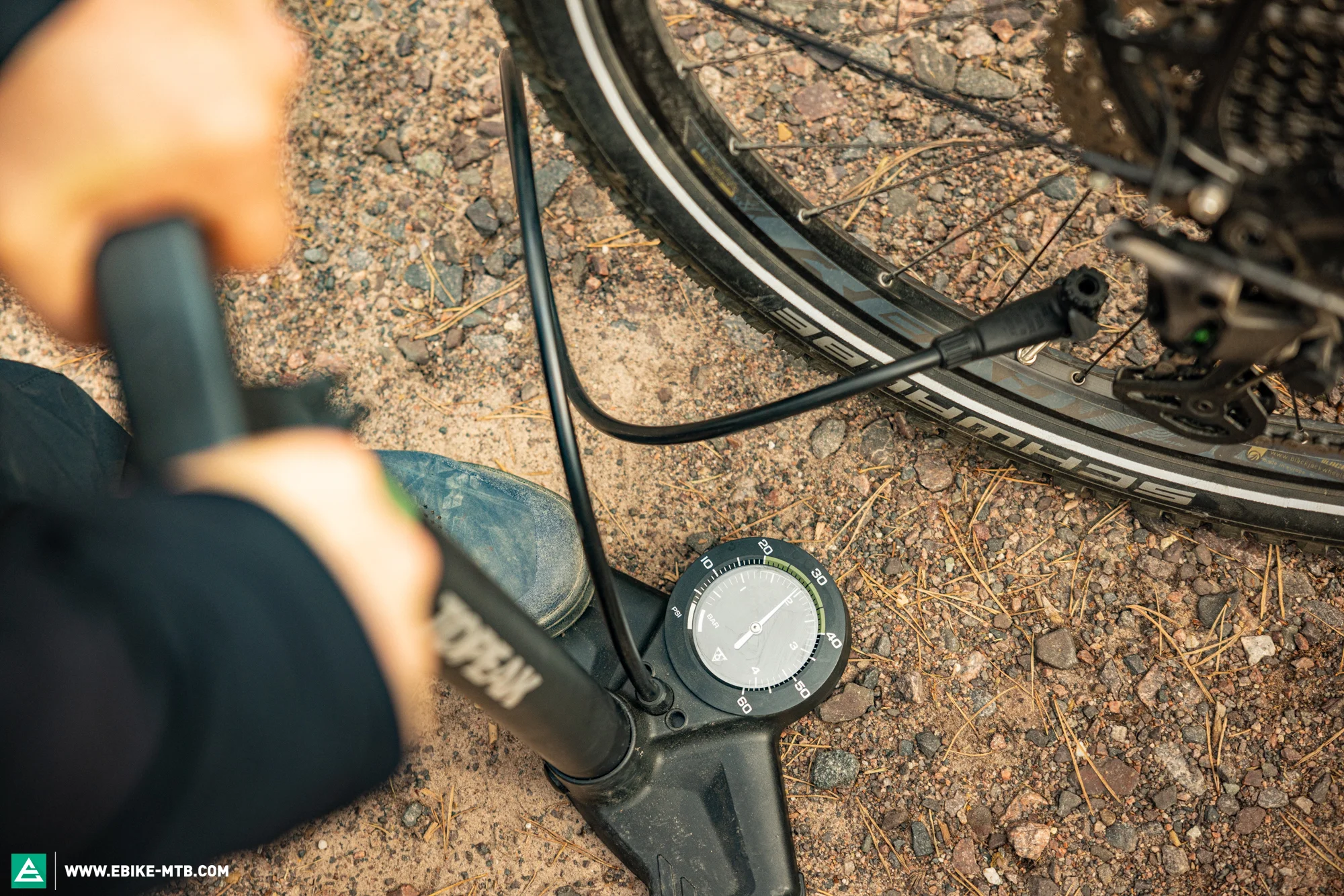
More isn’t always better, and increasing the tire pressure generally isn’t the solution – especially with an SUV e bike. If you prefer comfort and grip instead of wobbling and nervous handling at speed, you should run your tire pressures below the manufacturers’ recommendations. Step-through bikes are particularly prone to speed wobbles because the lack of a top tube makes them flex more easily, which is made even worse by rock-hard tires that bounce around all over the place. The tire manufacturers in the test field recommend everything from 1.6 to a whopping 4.5 bar, with some even specifying 2.8 bar as the minimum tire pressure. The rationale behind this is to maintain the integrity of the tire, tube, and rim, but the handling and the rider are often neglected. It’s tempting to increase tire pressure on smooth tarmac, as harder tires generally roll faster, and you can avoid punctures and pinch flats. When in doubt, riders with little experience typically just choose the golden mean of the manufacturer’s recommendation, which can often be over 3 bar, and ultimately leads to many disadvantages. Even our heaviest tester, Rudi, weighing just over 100 kg, doesn’t pump his rear tire to more than 2 bar when commuting on paved country roads: “I would rather get one or two flat tires a year on those few occasions where I hit a pothole than sacrifice the grip and comfort that a compliant tire gives.” The increased rolling resistance is negligible thanks to the assistance of the motor, and it only matters on smooth asphalt roads anyway (yawn). In addition, the battery range of the SUV e bikes on test is so big that there’s no need to extend the range with little tricks like increased tire pressures. Although the analogue trekking generation was used to riding with higher tire pressures, modern ebike tires have a higher volume and more robust casings.
Tuning tip:Go tubeless! No need to fear getting a flat, the sealant repairs small leaks all on its own. ROTWILD know how it’s done and sent the test bike already set up tubeless.
Brakes
With SUV e bikes, braking performance is especially important due to their weight and wide range of uses. More than just braking power, you also need good modulation. How quickly can the brakes bring you to a halt? And how hard have you got to pull the levers to do so? And does the SUV e bike have an ABS system? The brakes in our test field all come from the eMTB sector, which is why they let you brake with just one finger. They work well on most of the bikes on test, but some SUV e bikes like the ADVANCED or the Moustache make life unnecessarily difficult.
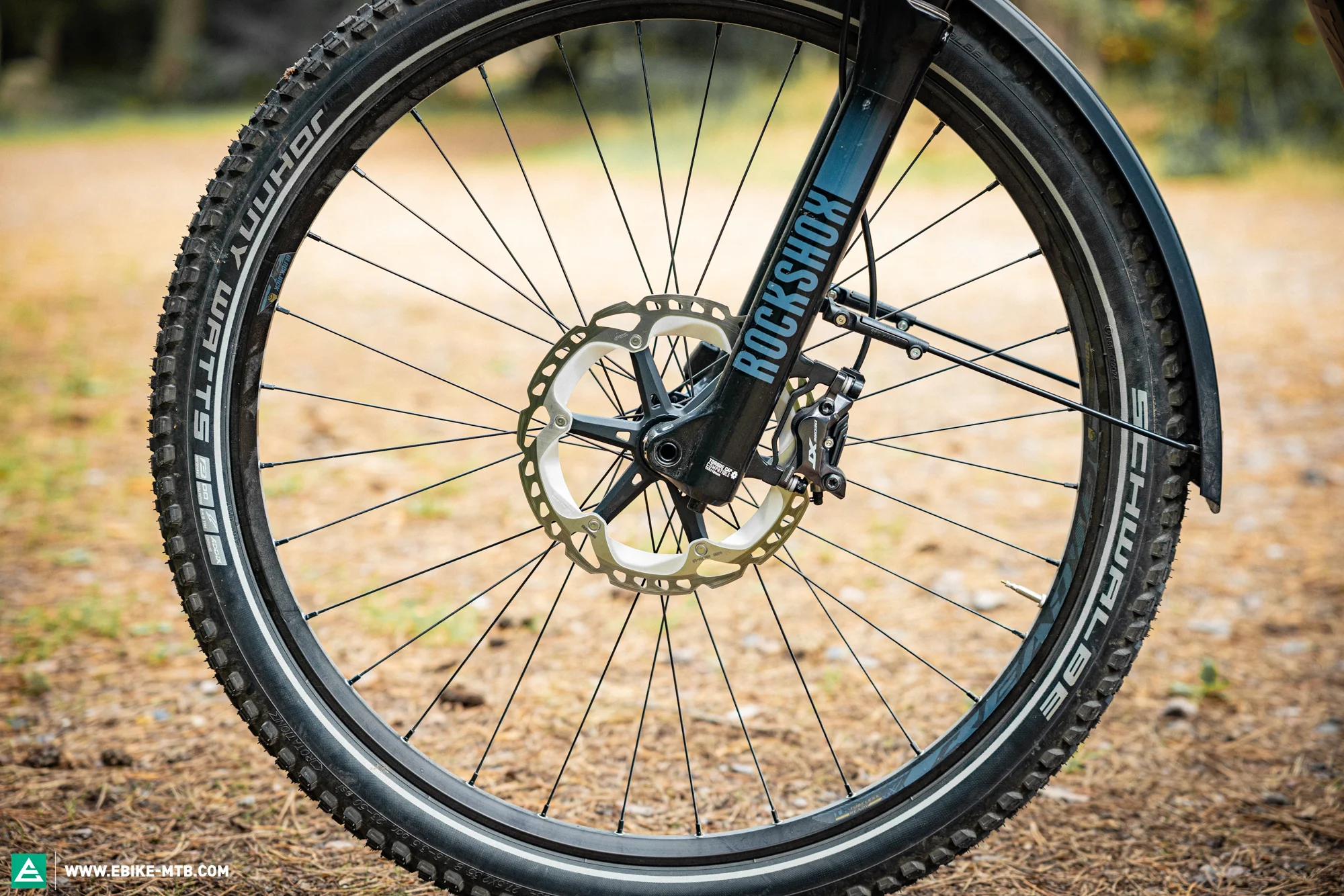
Suspension
Our full suspension test fleet has everything from 100–140 mm travel. How much you need depends on how often and how far you want to venture off-road. However, our SUV e bike group test also showed that it’s not just the amount of travel that matters. The CONWAY has the second shortest travel after the GIANT, but its sophisticated rear suspension is incredibly efficient, offering all the grip and comfort you need with just 100 mm travel. CONWAY show that it’s not the amount of travel that matters, but how the suspension uses that travel.
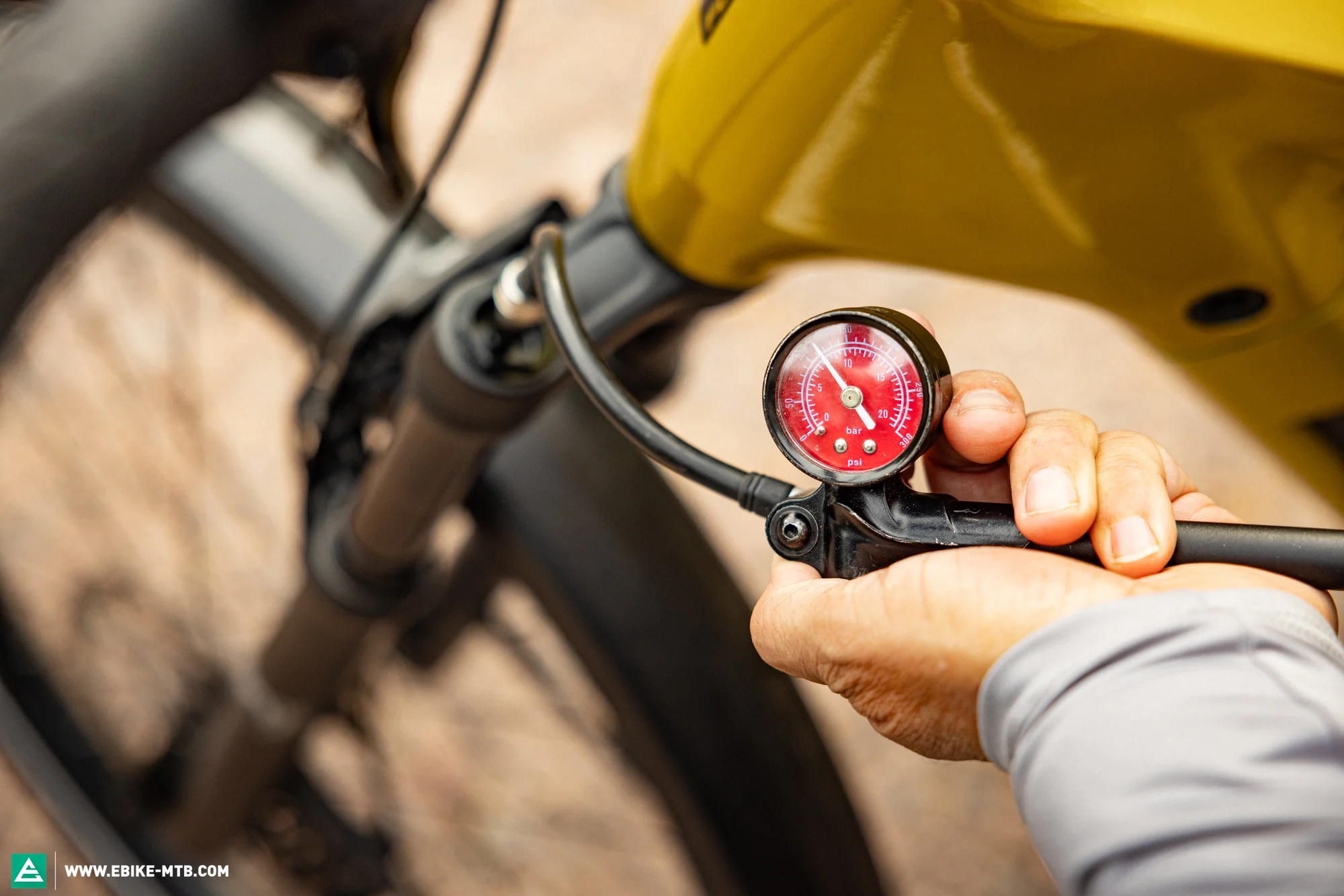
Ergonomics and riding position
If you can adjust the height and angle of the stem, the riding position can be adjusted to suit your personal preferences and everyone can find a comfortable riding position depending on how they use their bike. Sitting aboard the ROTWILD or Specialized, you will notice that you must adopt a relatively sporty riding position to reach the handlebar. Bikes like the CENTURION and the Moustache, on the other hand, offer a rather upright posture, reminiscent of a Dutch bike. Furthermore, just because it’s a step-through doesn’t necessarily mean that the step-through is low. In contrast to the CENTURION, the Moustache has a rather high step-through and riders who have trouble lifting up their leg might run into problems here despite the step-through frame. A dropper post offers a big plus in comfort. It doesn’t just let you stay comfortably seated when stopping at traffic lights, but also lower the saddle when riding downhill. This gives you more freedom of movement on rough downhills and also lets you feel nice and planted on the bike when sitting down on asphalt descents.
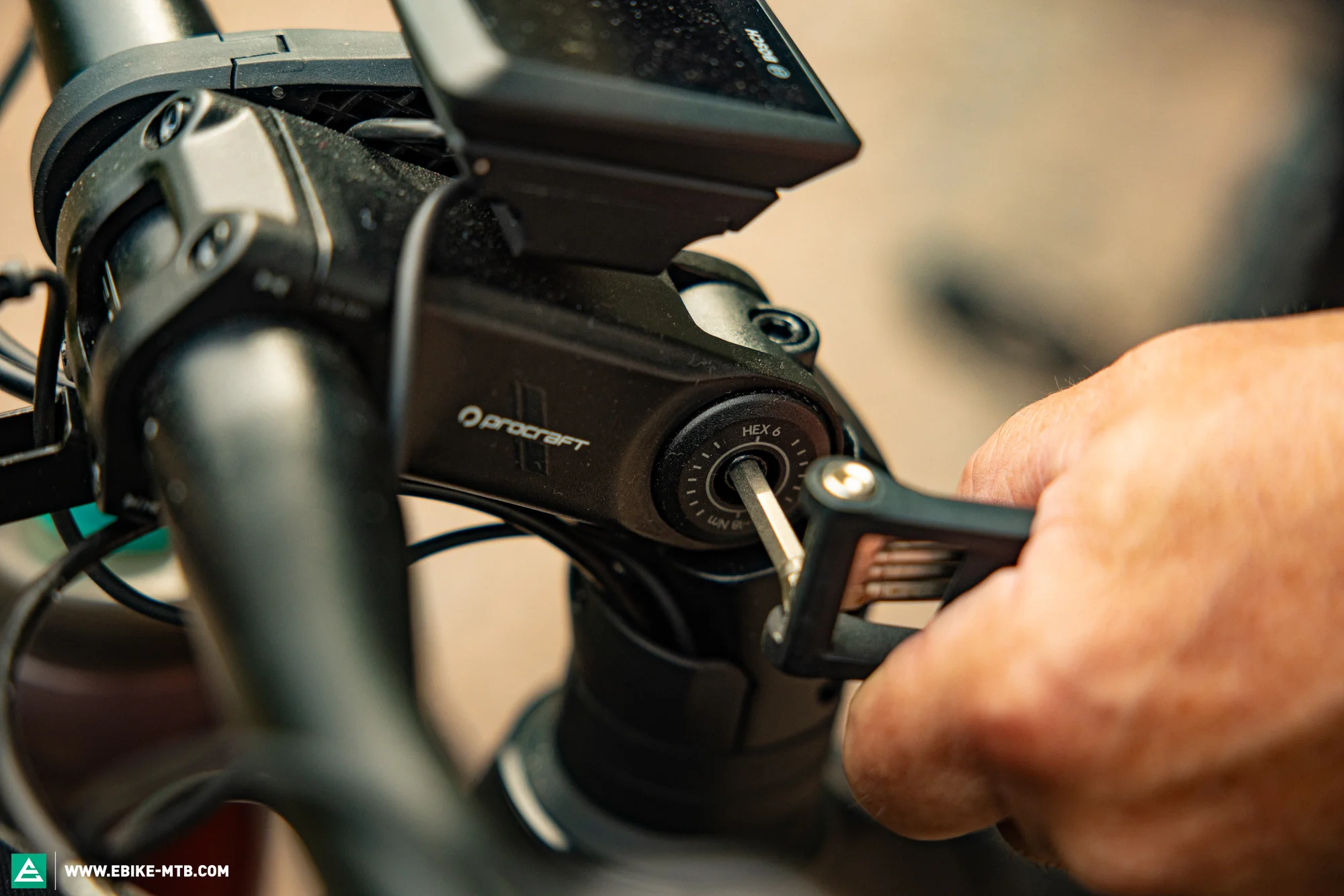
Noise level
The noise level of certain components is something you shouldn’t overlook, or should we say overhear, when it comes to SUV e bikes. A loud motor combined with a rattling stand can dampen the fun significantly. Especially if you have the feeling that the bike might fall apart at any moment. The most common sources of unwanted noise in our test field were the side stands and mudguards. This became most noticeable on bumpy woodland paths and rough cobblestones. If you ride off-road quite often, and it bothers you too much, removing the stand might be worth your while.
Handling
The handling of an SUV e bike is crucial to the amount of fun you can have and the confidence you feel. If the bike feels composed and predictable both in and out of the city, you’re bound to have a good time. What makes the handling fun? There are several factors that play a role here. SUV e bikes are all about hopping on and hopping off. That’s how effortless it should feel when getting on the bike, setting off, and parking it. The handling should be lively and dynamic, paired with a powerful, yet natural feeling and easily controllable motor. To have fun on the trails, the bike needs to be capable off-road, which is another aspect where the suspension comes in. It shouldn’t just be designed to absorb individual bumps and offer as much comfort as possible when riding down a curb, but also offer support and feedback from the trail when you’re riding off-road. If you hit several bumps in a row like you would when riding over roots, the suspension should be capable of recovering and not bottoming out after the second bump. If you can’t decide between comfortable or firm handling, choose the Specialized Tero X, because it can do both!
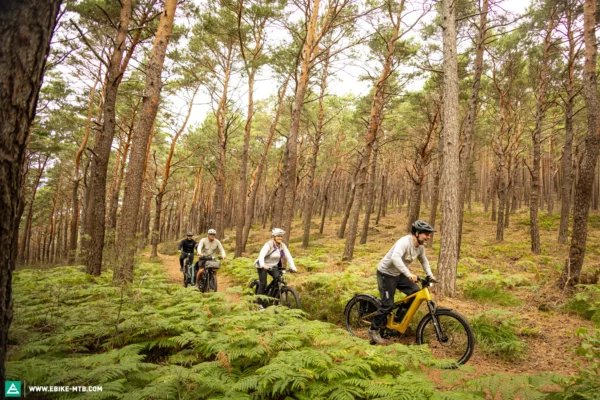

You will really notice how responsive and precise the steering feels when the gravel roads come to an end. Control, precision and agility are influenced by many factors; grippy tires, a plush suspension fork, supportive rear suspension, and the weight distribution on the bike, determining how much weight and therefore traction you’ve got on the front wheel. Added to that is the frame geometry like the head angle, wheelbase, bottom bracket height and so on. Even the handlebar width influences the handling. The ROTWILD is rather precise, sporty and stable, whereas the Moustache is rather lively with a Dutch bike feel. Since SUV e bikes aren’t just made for fun trips around the block but also for commuting or touring, they often come with luggage racks fitted. You shouldn’t notice them while riding – extra wide racks at the rear like on the GIANT and Moustache look bulky, but they ensure that the panniers don’t get into the spokes, chain/belt, or brake rotors. By the way, the weight distribution of the panniers also affects the handling. Besides the handling, however, good looks and a beautiful design can also be fun. When driving a Lambo through the city, it’s not about how fast it accelerates from 0 to 100, but how stunning it looks.
Theft protection
Protecting your SUV e bike from theft isn’t to be neglected considering what they cost. Those who want to park their bike by the lake to go for a swim, or in front of the pub to have a drink, will benefit from the peace of mind offered by effective theft protection. A digital or analog lock is a must, but additional measures to deter would-be thieves never hurt. Besides a GPS tracker, a motion-activated alarm can effectively ward off anyone that’s tampering with your bike. That way you can enjoy your swim or your drink without always keeping an eye on your bike.
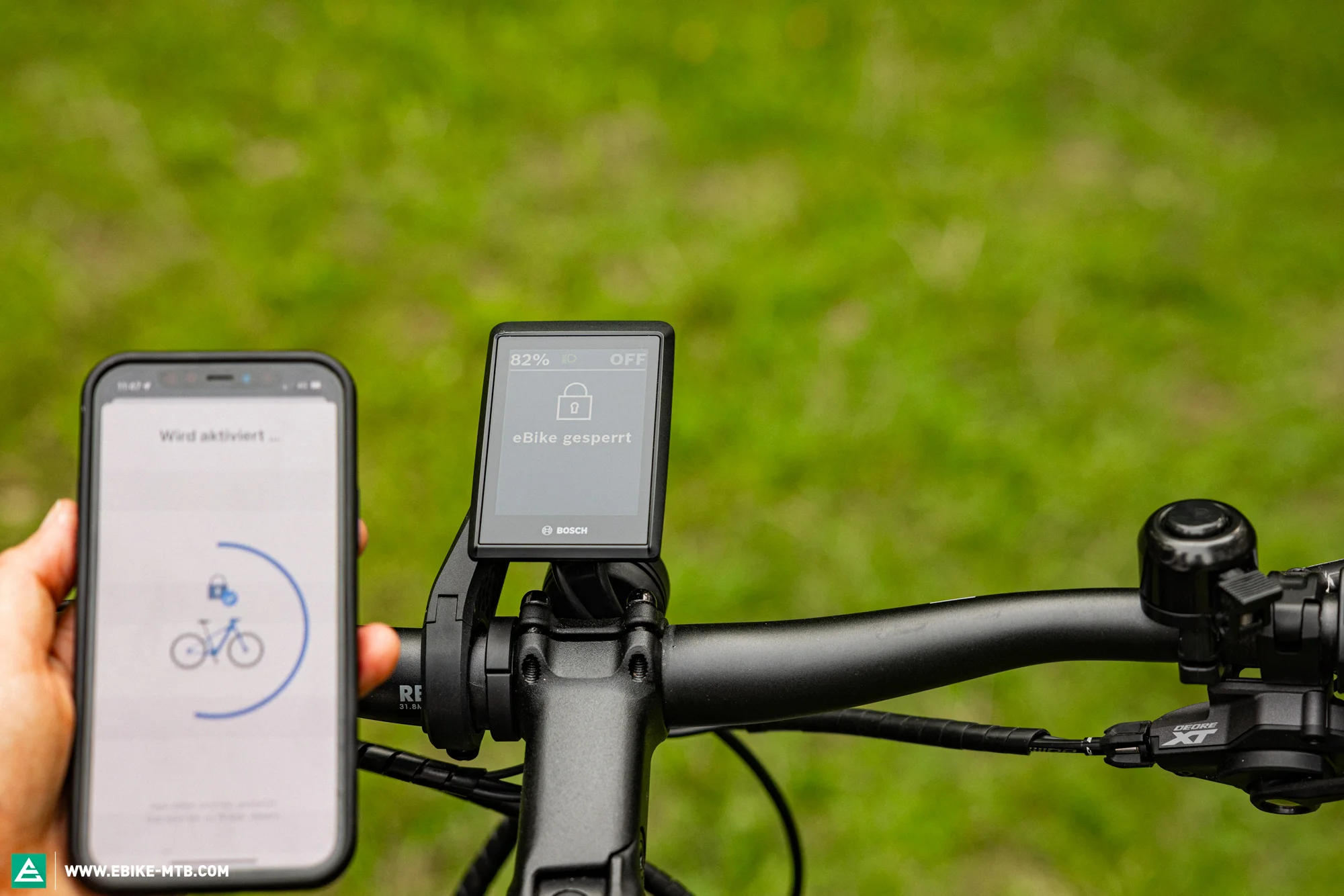
All SUV e bikes with the Bosch Smart System come with the eBike Lock function as standard, turning your smartphone into a digital key. Moustache also spec the J. All with the Bosch ConnectModule, which includes a GPS tracking chip. The Riese & Müller Delite 4 uses the in-house RX chip instead, which serves as a prerequisite for the R&M location tracking and replacement service. The three eSUVs with FIT systems can also be retrofitted with the FIT Digital Key and FIT E-Bike Tracker for a fee. The Specialized Tero X can also be locked via your smartphone or a pin, and even sounds an alarm if it gets moved without permission: hands off!
Weight
When using your SUV e bike as a pack mule on your daily errands or for long tours, it’s important that you don’t exceed the maximum permissible weight limit. We’re not just talking about the carrying capacity of the rack, but about the total system weight. This includes the weight of the ebike, rider, and all of their luggage. If you’ve got a dog and want to pull a dog trailer, then you’ll want to make sure that the SUV e bike is approved to do so.
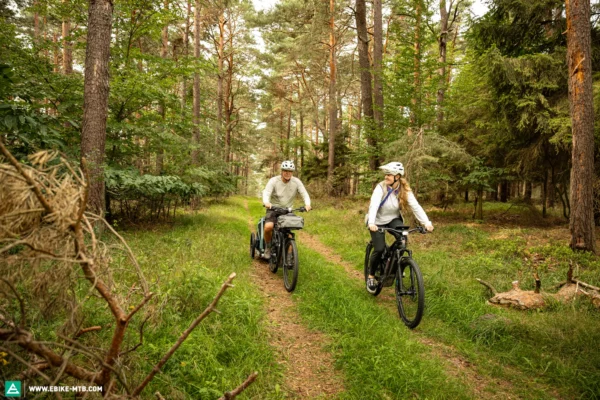
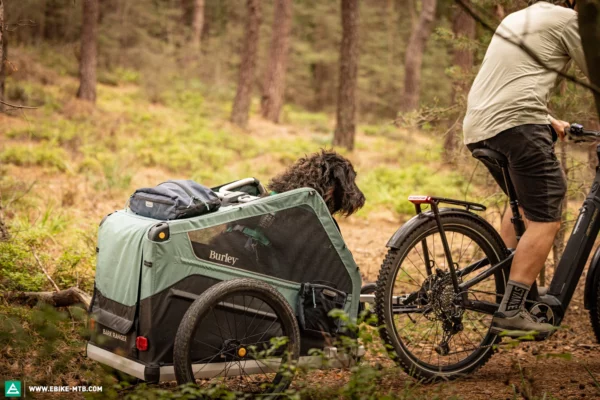
But how important is the weight of your SUV e bike in general? Do you know of an SUV that doesn’t have air conditioning just to reduce the vehicle’s weight? Neither do we. And it’s the same with the SUV e bikes on test. What counts is having a bike that’s equipped to cater to a wide range of use cases while offering as much comfort and safety as possible. SUV e bikes are made less for bunny hopping over roots, hitting jumps, and chucking them through corners. For the best all-rounder, it’s better to accept a higher weight, giving you more functions and increased versatility. Of course, there are scenarios in which the weight can be annoying, such as when carrying the bike up or down stairs or picking it up to put it onto the bike carrier. This is where removing the battery can help.
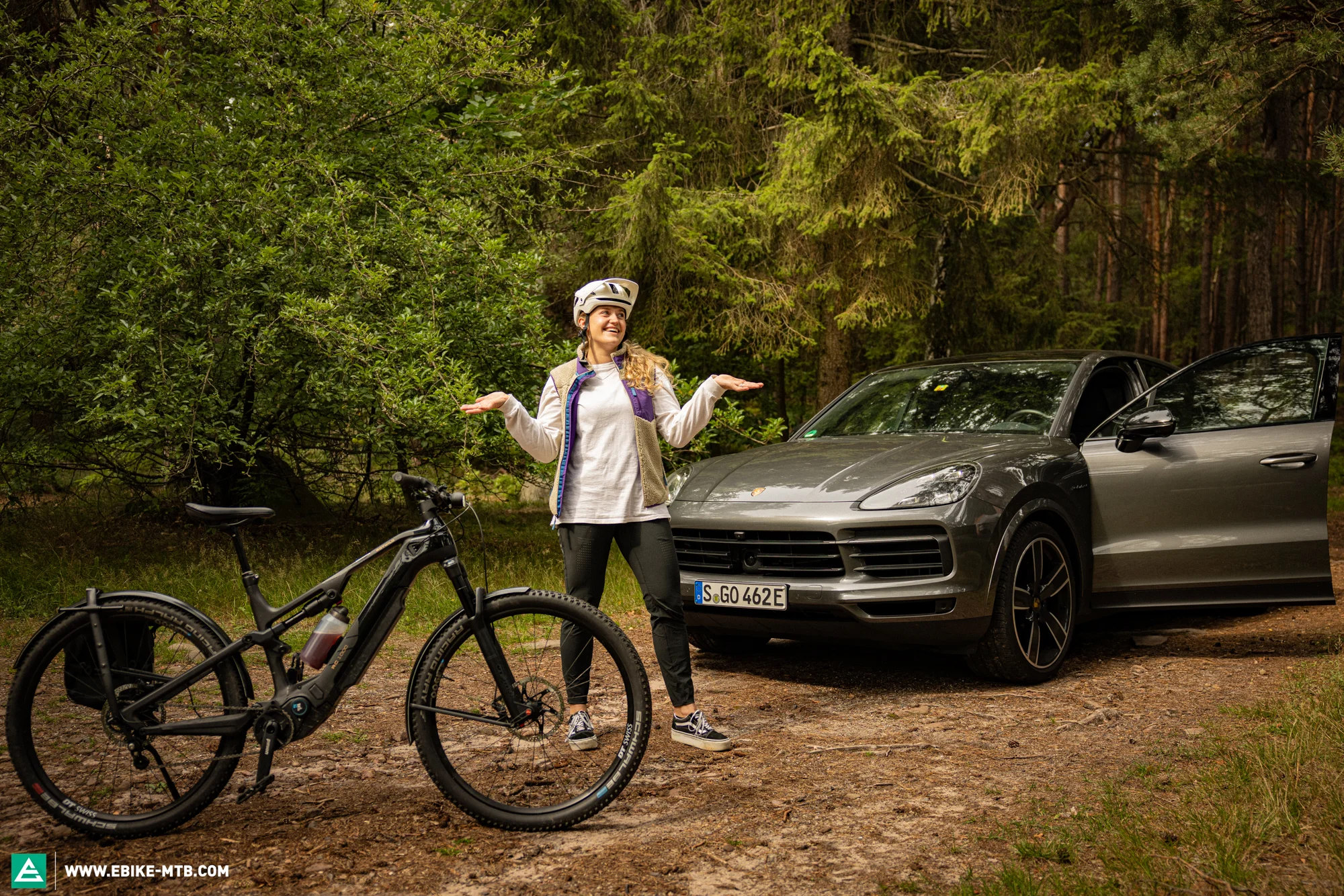
With most ebikes, the discussion about how much battery capacity you need and how much weight you can save with a smaller battery can often get quite heated, but it’s a good discussion to have. The four step-through ebikes on test are all at the bottom of the test field in terms of battery capacity, which isn’t surprising. A step-through or wave frame usually has a compact geometry: the front is tall and the distance from saddle to handlebar is rather short, resulting in a compact, upright and therefore very comfortable riding position aboard the SUV e bike. The side effect is that they’ve got rather short down tubes, which leaves little space for long batteries, especially in frame size S.
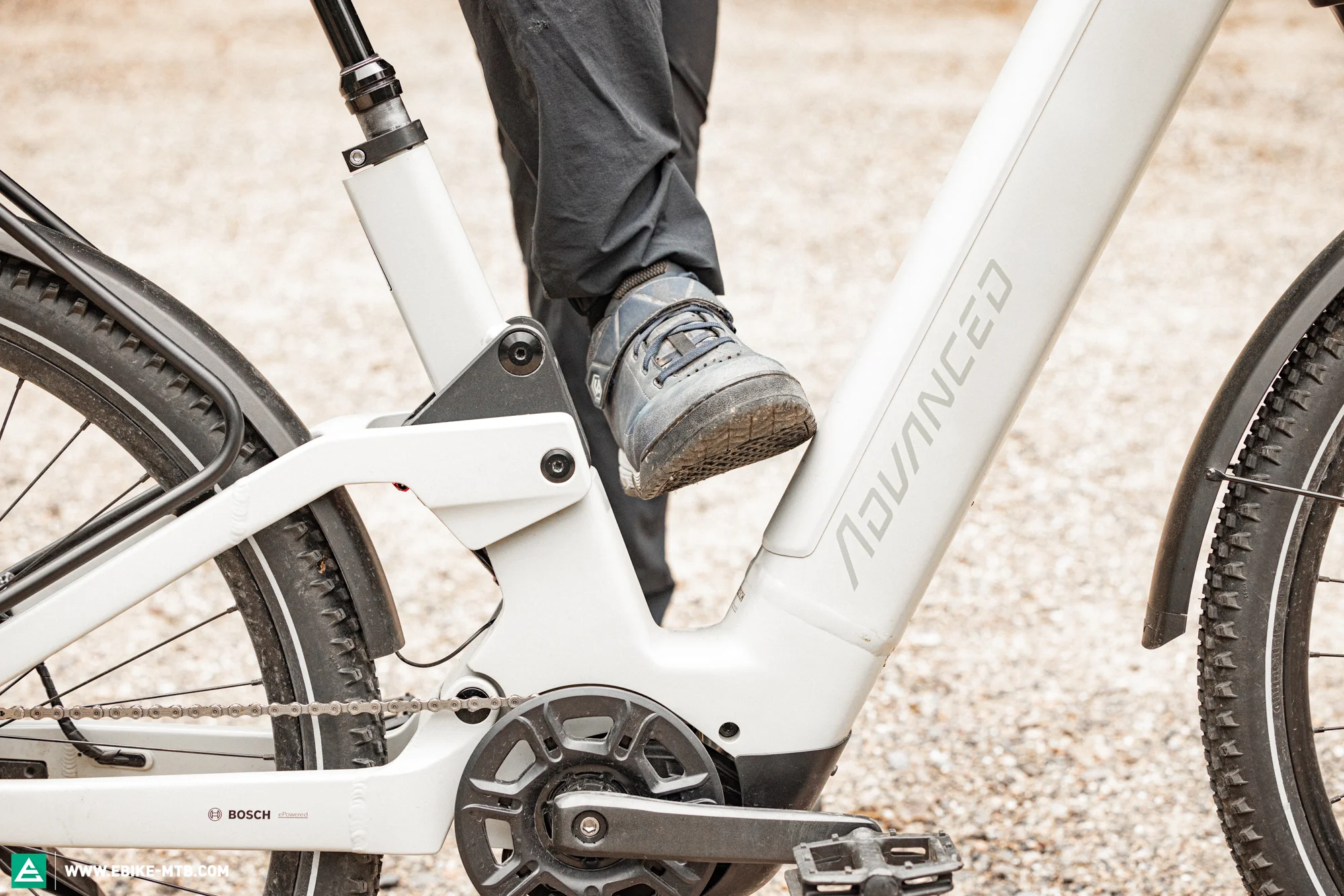
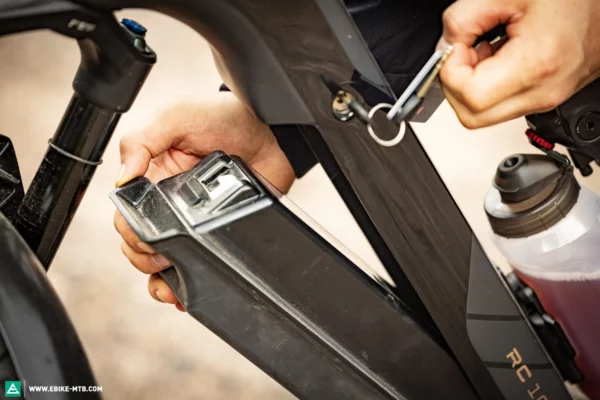

All four step-through bikes on test come with 625 Wh batteries, which many riders find to be sufficient for a big day trip. The exception to this rule is the ADVANCED, all sizes of which can also accommodate a large 750 Wh battery in the down tube, though this bike isn’t as short and compact as the other step-throughs either. Bikes like the Riese & Müller and the GIANT also manage to accommodate a large battery despite having a very short reach. For the Moustache, on the other hand, you can choose between 500 Wh or 625 Wh, which can make sense for light riders – reducing the weight and saving you € 200, which you can invest in a range extender. The 250 Wh PowerMore range extender from Moustache costs € 500, giving you added flexibility when you need it, and it can also be plugged into other bikes.
Setup
As we preach so often, your bike is only as good as you set it up! Even if you buy the best bike, it can still ride terribly if it isn’t set up properly. And by that we don’t just mean the tire pressure. If this isn’t something you feel confident doing yourself, we recommend paying your local dealer to do it for you.

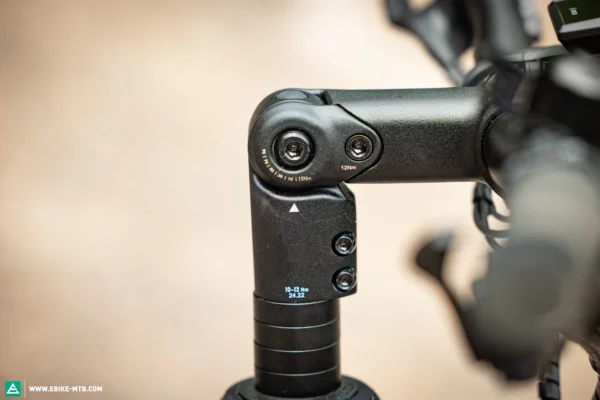
Set-up 101, what does it all include:
– Shock and fork pressure
– Saddle height
– Brake lever position, reach, and bite point
– Handlebar height and position (in case you’ve got an adjustable stem)
– Tire pressure (not too high)
– Position and fit of the panniers! (Better to make sure they’re sitting well than having to worry about them while riding)
To make setting the bike up even easier, quick-release levers are a very helpful feature: simple, tool-free, and fast. This is very convenient for households that share a bike. With our test fleet, it quickly became apparent that some bikes, such as the ADVANCED, have shocks and other components that are difficult to reach. That can make setting up the bike a little more difficult, but adapting the bike according to the surface you’re riding on, the rider’s weight (including luggage), your preferred riding position, and your riding style always pays off.

Our test field includes some extraordinary rear linkage designs, such as those on the GIANT and Moustache, which have a single swing arm instead of a rear triangle. This design makes fitting a belt a whole lot easier because you don’t need to open the rear triangle with the help of a coupler or brake-away. But don’t worry, this is something you’ll usually leave to the professionals (unless you catch a flat tire – woops!). Furthermore, the Moustache doesn’t need a flexible belt tensioner to account for belt growth either, because the motor is part of the swingarm – chapeau!
Accessories
Those who usually ride without a side stand and mudguards will quickly notice how practical these accessories really are with an SUV e bike. No more desperate searching to find a free bike stand or wall to lean your bike against in the city. You can park your SUV e bike at any time and anywhere, and access the contents of your panniers a lot more easily because your hands are free. In addition, the chain, motor and bearings don’t get covered in dirt or put under strain because you’ve got to lie the bike down. That said, having a stand is only fun if it is sensibly built and positioned, which isn’t the case with all bikes. The same goes for the mudguards, which should be sturdy and offer sufficient clearance for the tires. We were particularly unimpressed with the way the mudguards were mounted to some of the SUV e bikes on test, rattling and rubbing up against the tires while riding. And they’re not just there to fend off of mud and spray, but also serve as a load-bearing component for the lights. Speaking of lights, we expect them to have a high beam and brake light function. It’s an easy upgrade that offers great benefits, so this is something all brands should offer.
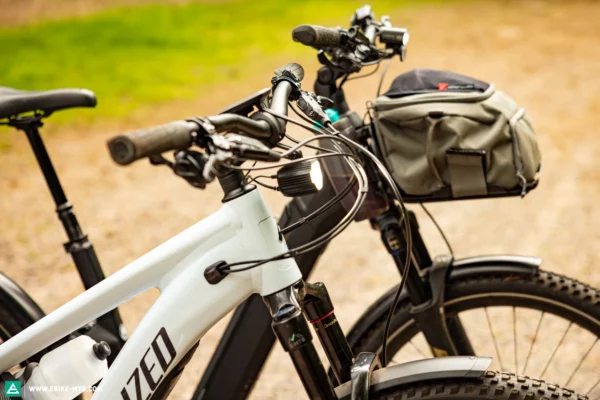

To use the SUV e bike like a pack mule, the luggage racks rely on various attachment systems. Some of them are even approved to carry a child seat. We were particularly impressed with the quick and secure Quick-Lock systems from ORTLIEB as well as the MIK standard. The bag attachment options depend on the bike. For example, the CENTURION, Riese & Müller, and the Specialized all have the option of a front rack. We decided against it on the Specialized to keep the handling more agile. If you encounter a really steep climb on a fully loaded trekking tour in the Alps with an SUV e bike, you may prefer pushing for safety reasons. This is where walk-assist comes into play, which magically helps you push the bike with just the push of a button.
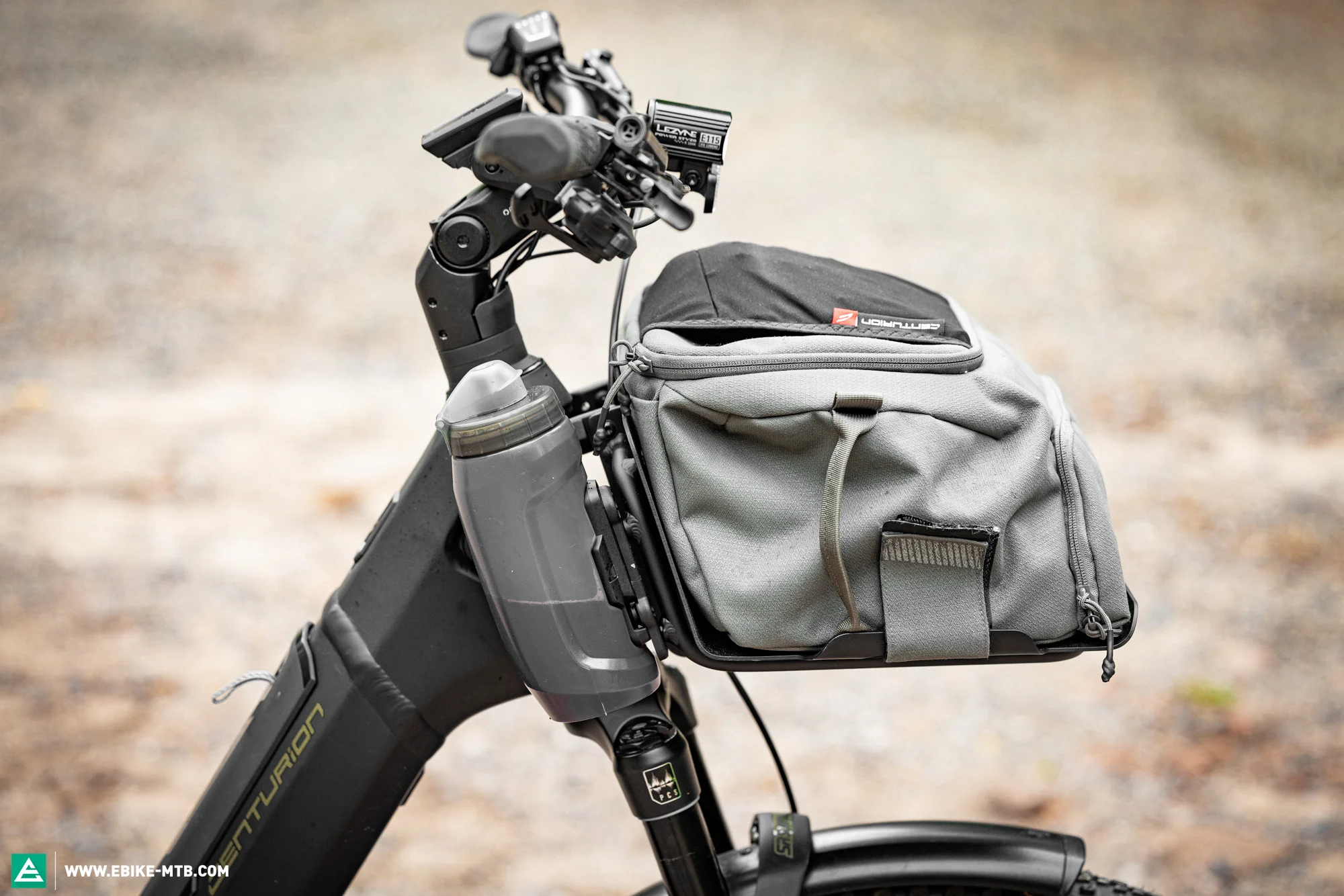
Design
SUV e bikes come in a wide range of shapes and sizes, from beefy like the GIANT, and svelte and sporty like the Specialized or ROTWILD, to a modern urban look like the ADVANCED. There are further differences in the details, like the size of the weld seams or the gap between the frame and the battery cover. A big gap isn’t just ugly, but also allows water to get into the frame and onto the electronics. The CONWAY and Specialized are particularly untidy with regards to the cable routing, some of the cables even dangle in front of the headlight! Clean cable routing and a generally tidy and uncrowded cockpit are a lot more pleasing to the eye. The displays are also integrated in a variety of ways: in the stem, like on the GIANT, or in front of the stem, like the rest of the bikes on test. ROTWILD are the only brand that don’t have the display in the middle, but to the left of the stem, and they also have the smallest display in the test field. The FLYER’s display is the biggest by far, almost like a TV. The integration of the motor and shock also lends every bike its own special touch. The ADVANCED is particularly noteworthy in terms of design: the artfully designed rocker link hugs the rectangular seat tube, inside which the shock is also almost completely hidden.
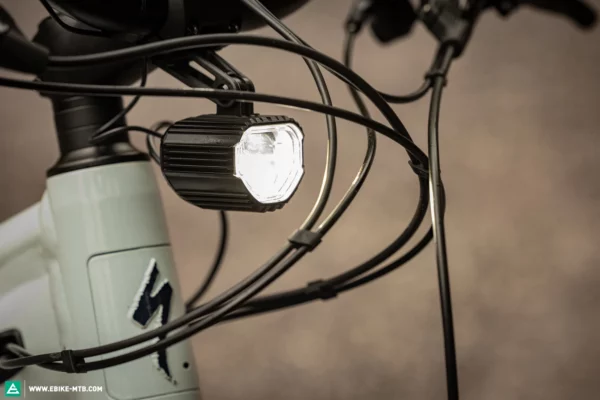
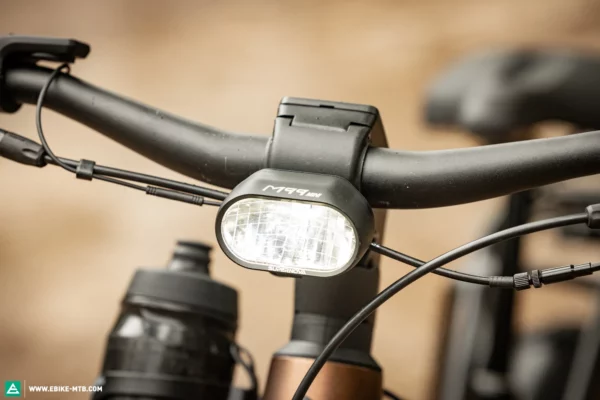
Tops
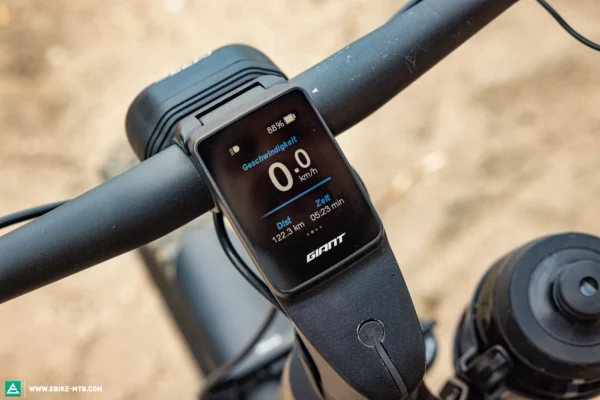


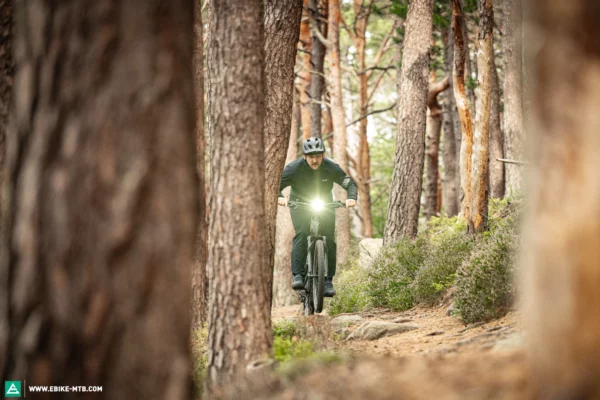

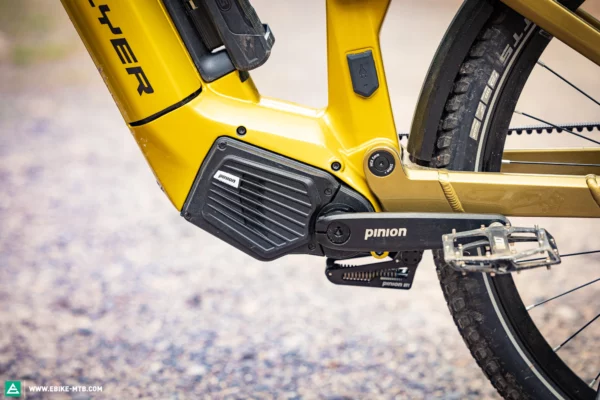
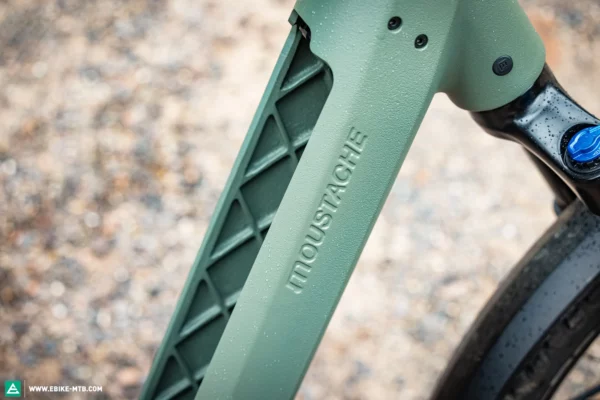


Flops
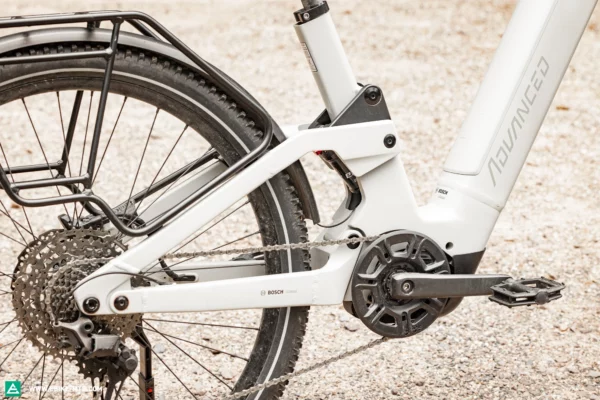

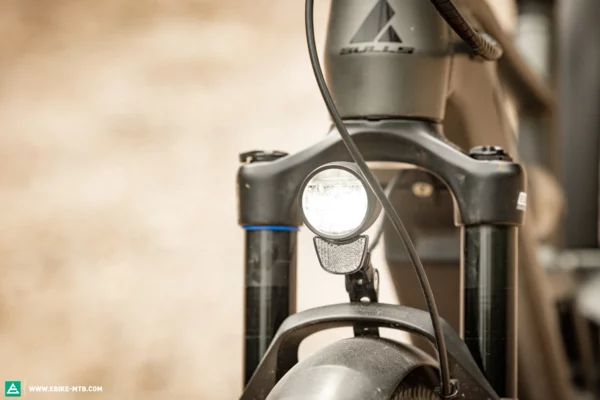
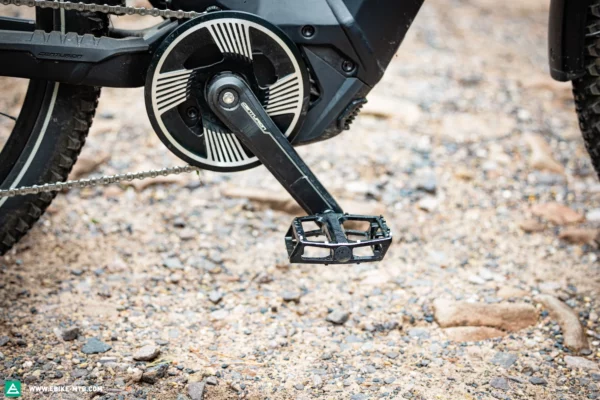



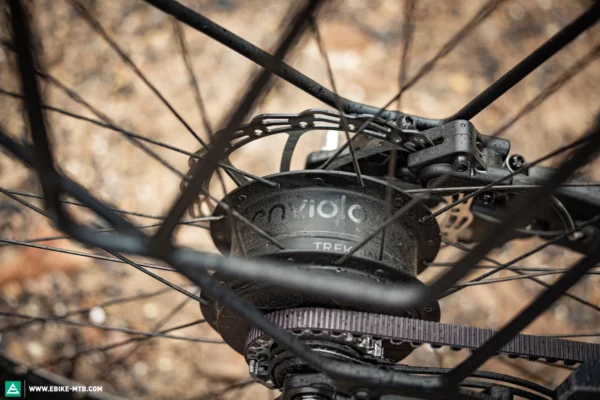

Collateral damage:
– 1x broken belt
– 1x broken geared hub
– 2x flat tires
– several shifted mudguards
– severely afflicted side stands
– several motor errors and restarts
Awards
Most fun
SPECIALIZED
Good all-rounder
CONWAY
A bike for long distances
GIANT
Sustainability champion
Moustache
Most adaptable bike
Riese & Müller
HOT DAMN
ADVANCED, FLYER und ROTWILD
Findings, Best in Test, and Best Buy
Fun, funner, Specialized Tero X 6.0! And that’s exactly why the SUV e bike from Specialized is also the Best in Test. It’s versatile, comes equipped with a couple of high quality accessories, and offers a high level of comfort. Active and sporty riders will certainly get their money’s worth. Specialized approached the concept from the other side: instead of just pimping a city or trekking bike, the American brand used their mountain bike expertise to design an eSUV that’s more of a toned-down MTB with a couple of accessories slapped on. So it isn’t just made for commuting to work, but also lets you have fun on the trail. All-in-one! And it looks cool too!
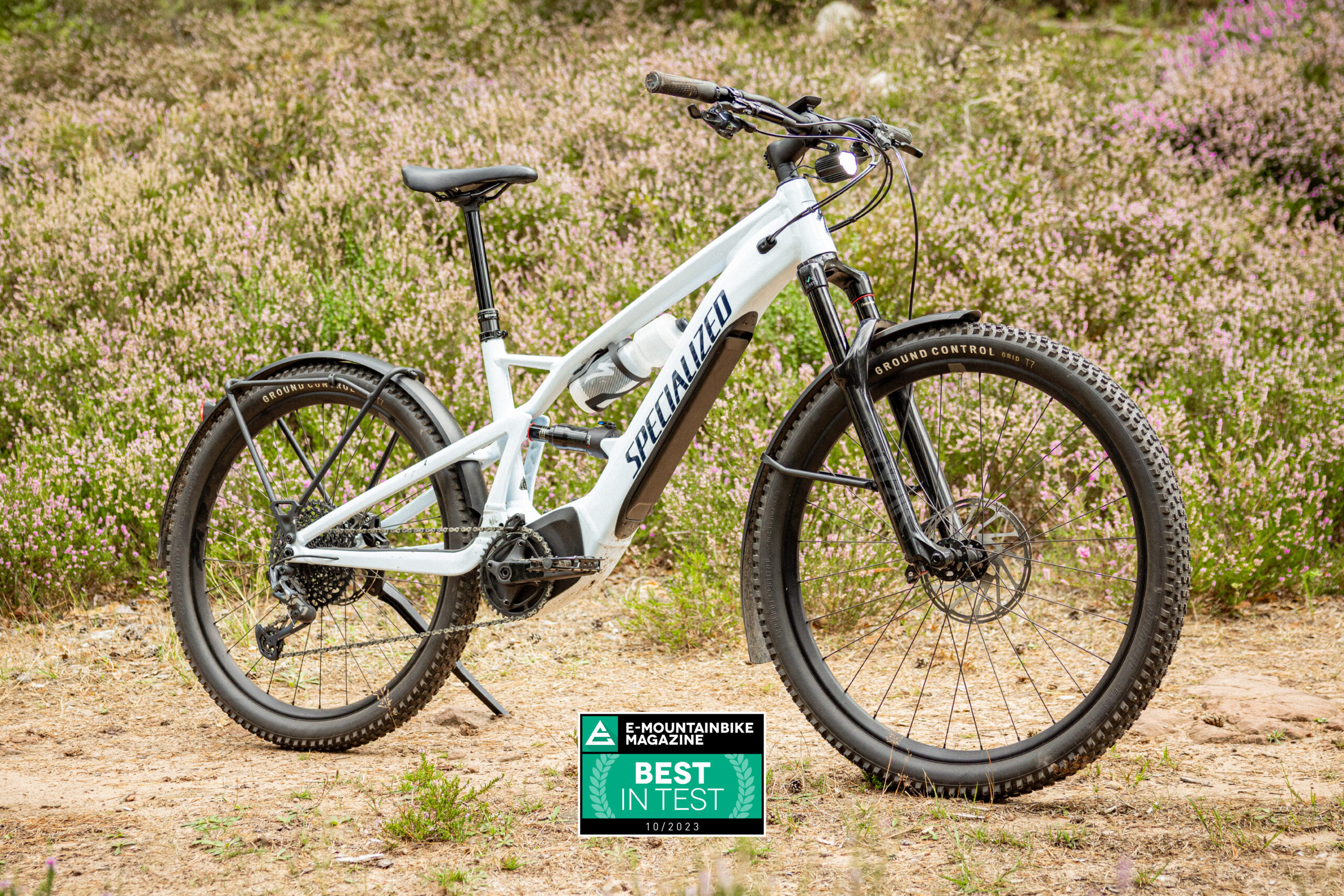
The CONWAY CAIRON SUV FS 7.7 exceeded our expectations: it’s capable of much more than you’d expect from an off-road step-through ebike. It’s both a relaxed cruiser and utilitarian pack mule for everyday life. It’s confidence inspiring and comfortable to ride, so you can have fun on any adventure. While it can’t keep up with the Specialized SUV e bike in terms of handling and design, it secures our Best Buy once again thanks to its attractive price.
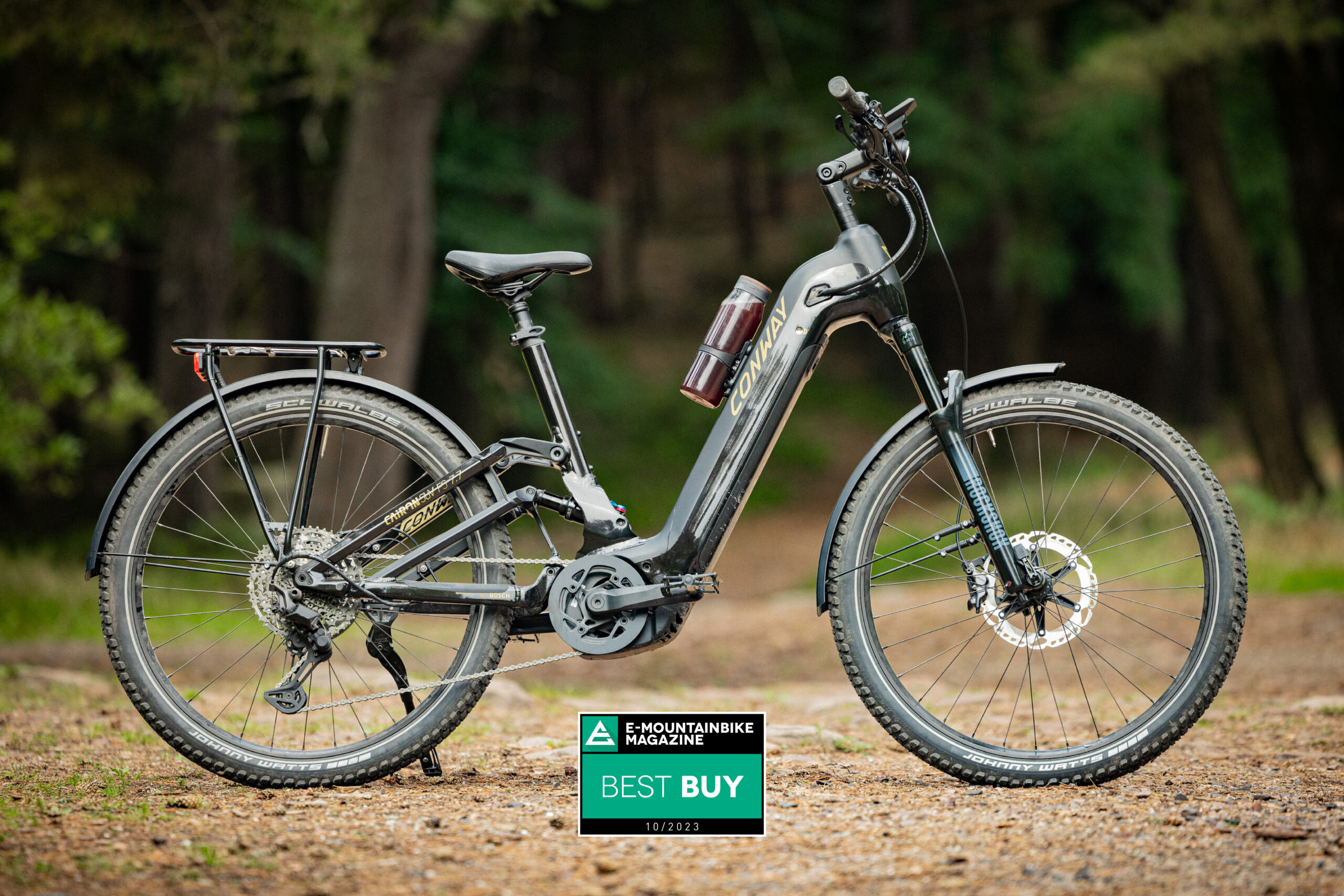
The French made Moustache J. All SUV e bike stands out thanks to its innovative, local production technique, which appeals to environmentally conscious riders. It’s comfortable enough for moderate gravel roads. However, the configuration of our test with a belt drive and geared hub held it back in hilly terrain due to the limited gear range. For improved uphill performance, Moustache also offer a model with a chain and derailleur. The derailleur-based drivetrain is a must if you ride in hilly terrain.
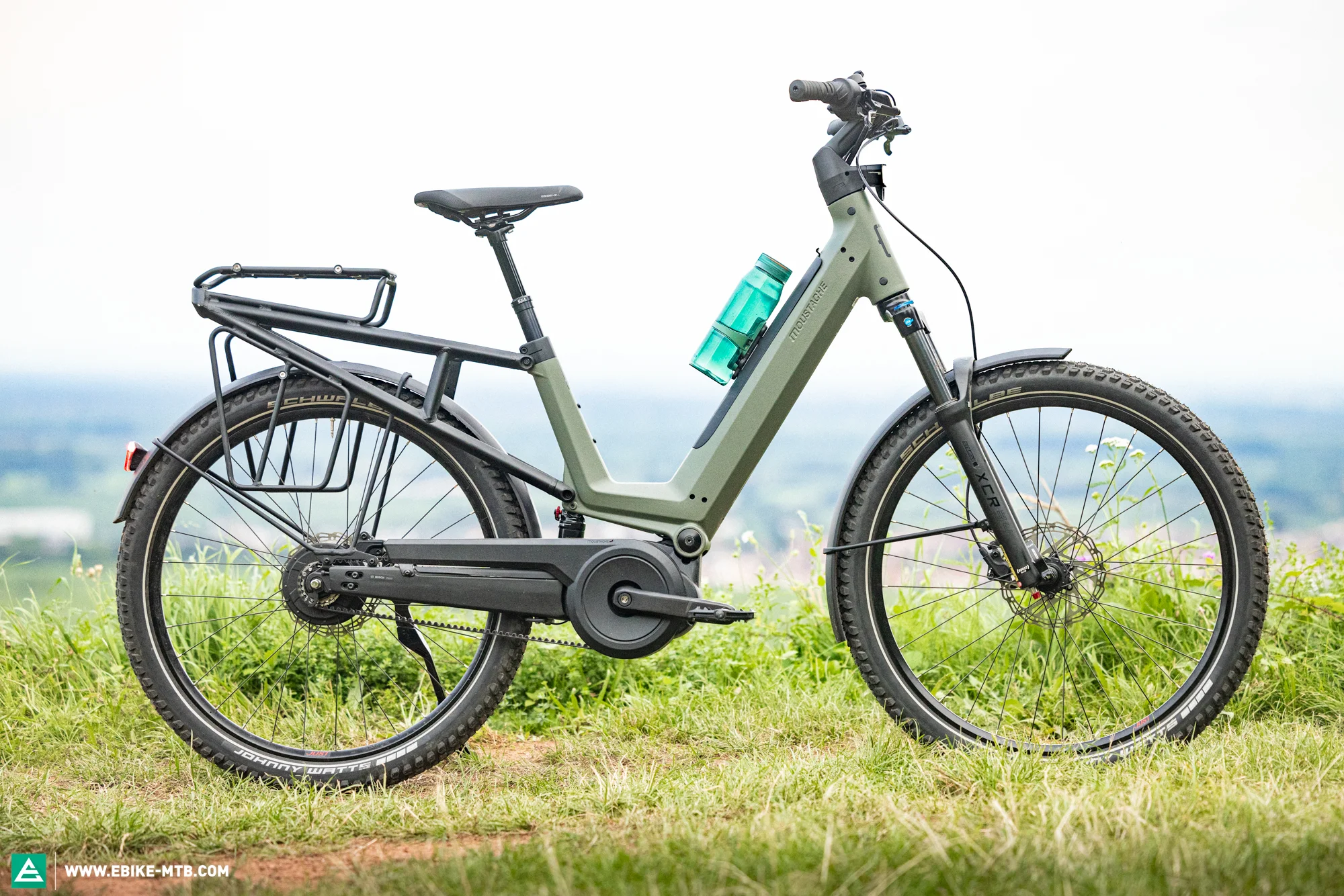
The CENTURION R3000i LX is a versatile companion, performing well both off the beaten track in explorer mode and in relaxed cruising mode. It should appeal to a wide target group and is characterised by its stylish design, though without neglecting functionality.

If you’re an experienced mountain biker and looking for a suitable bike for weekend tours, easy trails, and commuting, the ROTWILD R.C1000 might be the right choice for you. It will also appeal to those who value prestige, high-quality components, and a large battery capacity with minimal weight.
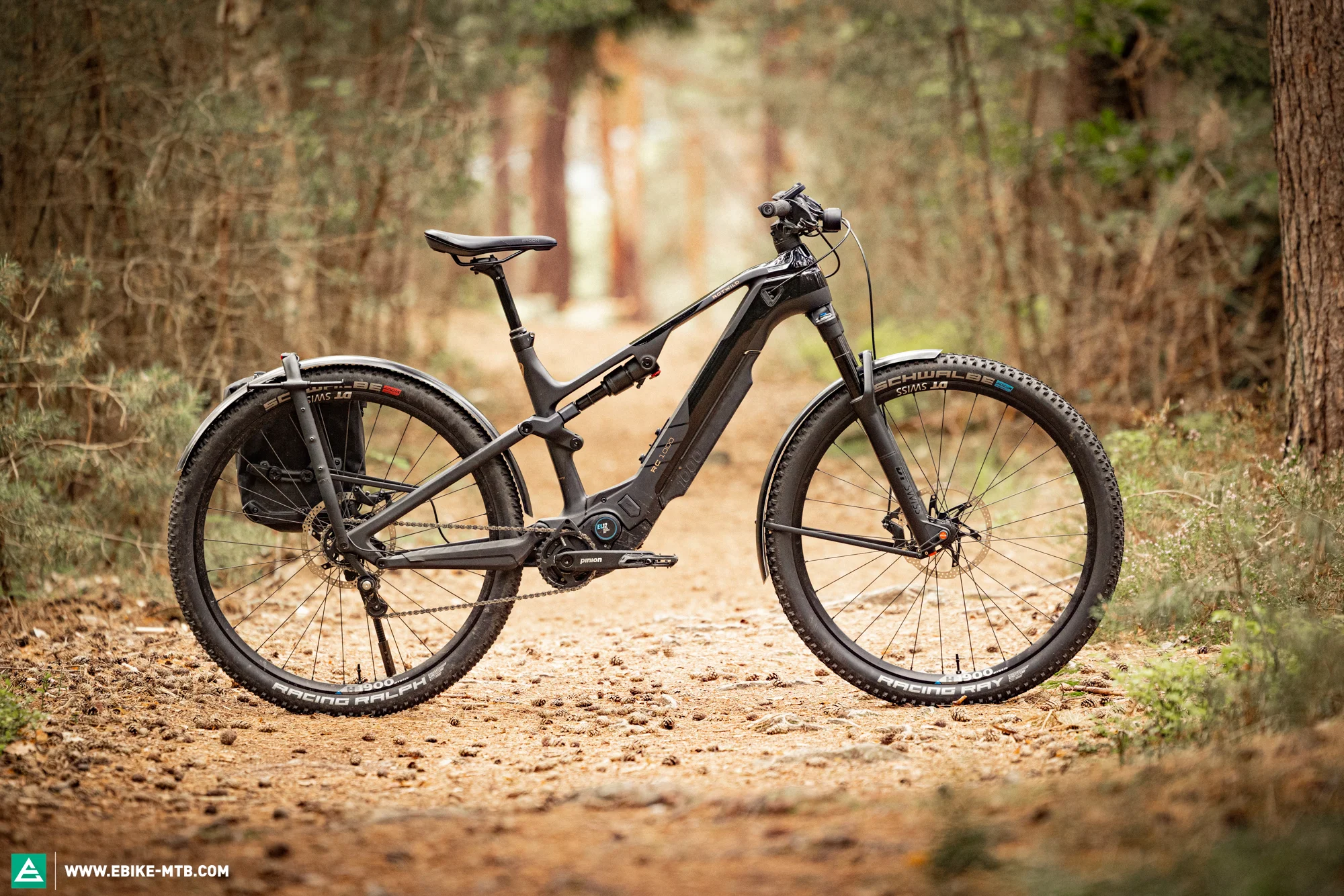
Those who want a stylish and capable bike will surely find it in the FLYER Goroc TR:X 8.63. This is not just due to the high-quality components and elegant carbon frame, but also because it is one of the more expensive models in our test field, which gives it a certain level of exclusivity.

GIANT vs Goliath! The GIANT Stormguard E+1 has everything you need for long distances. They didn’t hold back on mounting points and they didn’t try to save weight either. The heaviest and most fully equipped bike may look a bit like a North Pole expedition vehicle, but it’s kitted out with everything you need. It also has the largest battery capacity in the test field and an automatic Enviolo drivetrain, though the latter isn’t suitable for everyone.
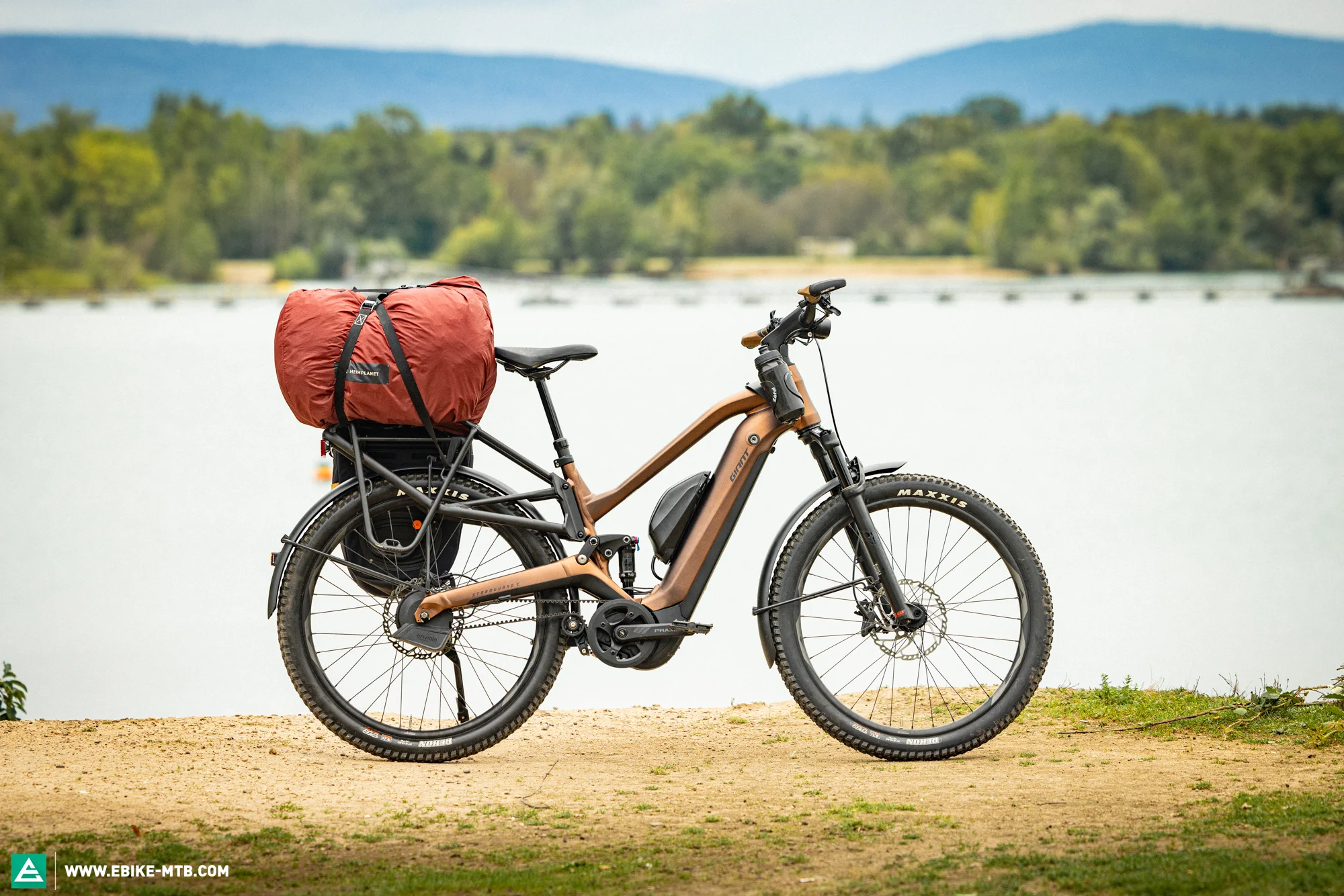
The ADVANCED Trekking Pro FS Wave is the winner of the beauty contest. It is ideal for hip city dwellers and occasional rides to the park or surrounding woodlands. It also offers a sensible alternative for those who want a long-range SUV e bike with a pleasantly low step-through thanks to the optional 750 Wh battery.

The Riese & Müller Delite E-Bike 4 GT Touring may not be the most versatile model, but thanks to the online configurator, you can customise it to suit your needs. The Delite also serves as an attractive option for city commuters and touring cyclists who want a bike with outstanding safety features. Durability and prestige are standard with Riese & Müller anyway.

The BULLS Vuca Evo FSX 1 is designed for urban dwellers and adventurers who enjoy covering long distances, but not necessarily on rough terrain. It’s a comfortable and versatile SUV e bike with an impressive range. The BULLS Vuca is a good choice for relaxed cruising and, thanks to its brutalist look, is also ideal for fans of architectural masterpieces like the wave breakers and concrete buildings of Paul Bonatz.
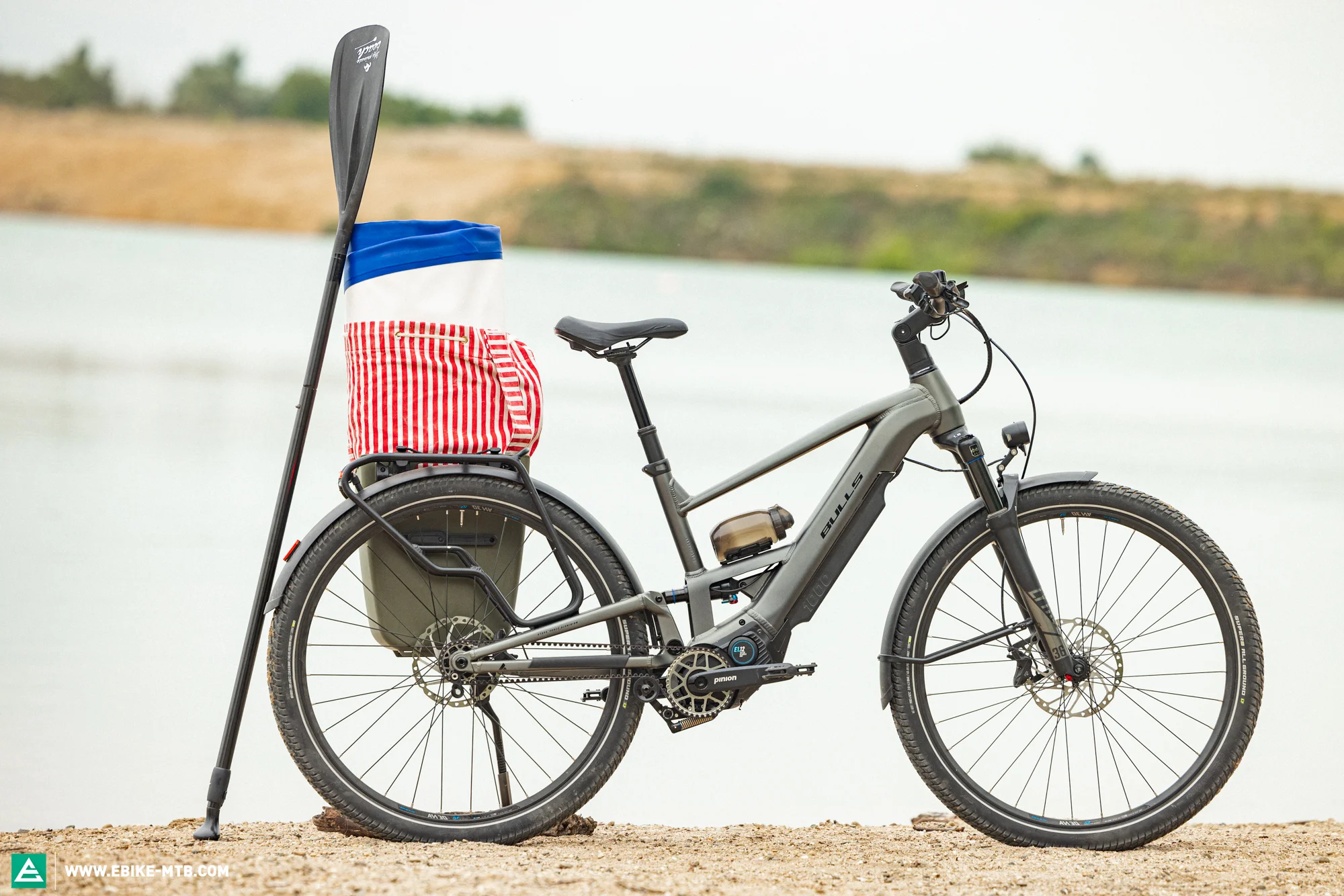
Findings
Looking back at the group test of 10 SUV e bikes, there were several aha moments. Let’s start with the biggest prejudice: step-throughs are reserved for old people and to be ridden in the city. Think again! Step-throughs are more capable than you think. It was also surprising how limited the GIANT’s capabilities are, though it isn’t a step-through and actually has a lot to offer. Furthermore, the BULLS and Riese & Müller can’t keep up with the CONWAY in terms of off-road riding fun.
Most of you who hear the term eSUV probably think of cars first. That is precisely why they’re often compared with SUVs from the automotive industry. Unlike the cars, however, SUV e bikes deliver on the promise of performance and functionality: they’re comfortable and also capable off-road.
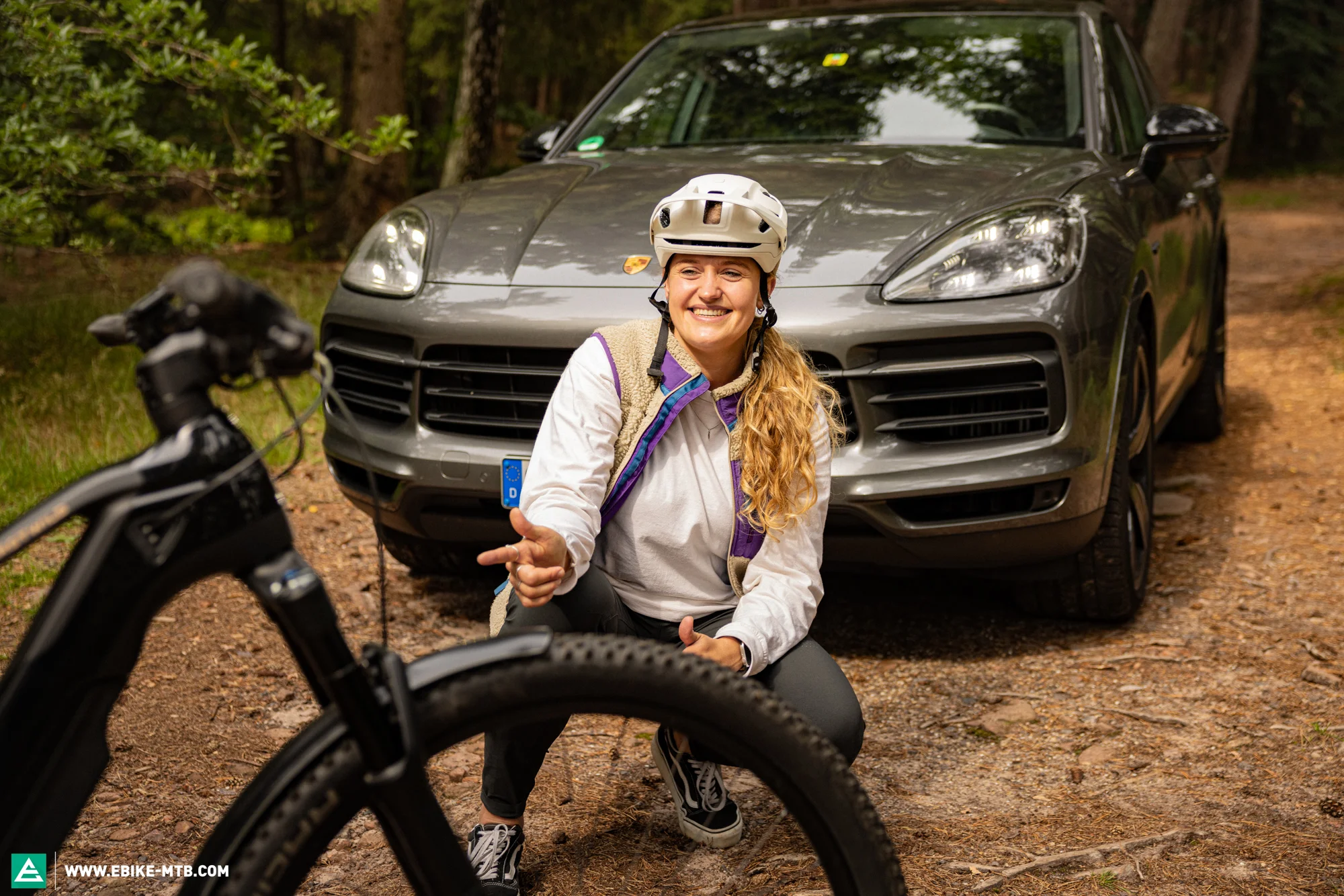
Ouch! One thing is clear, with an average price of € 7,000, even the most affordable bike on test comes in at a whopping € 5,300. And while the prices may be justified, they clearly put these bikes in a more exclusive category. At least there are lots of good discounts and special offers available, so shopping around is definitely worth it!
Conclusion
Are you ready to be a trendsetter? SUV e bikes represent a new generation of bikes. They outperform trekking bikes in many aspects and are true all-rounders. From sporty to comfortable, they meet all the requirements of a good everyday and pastime companion. Adventure guaranteed! SUV e bikes deliver on their promise!
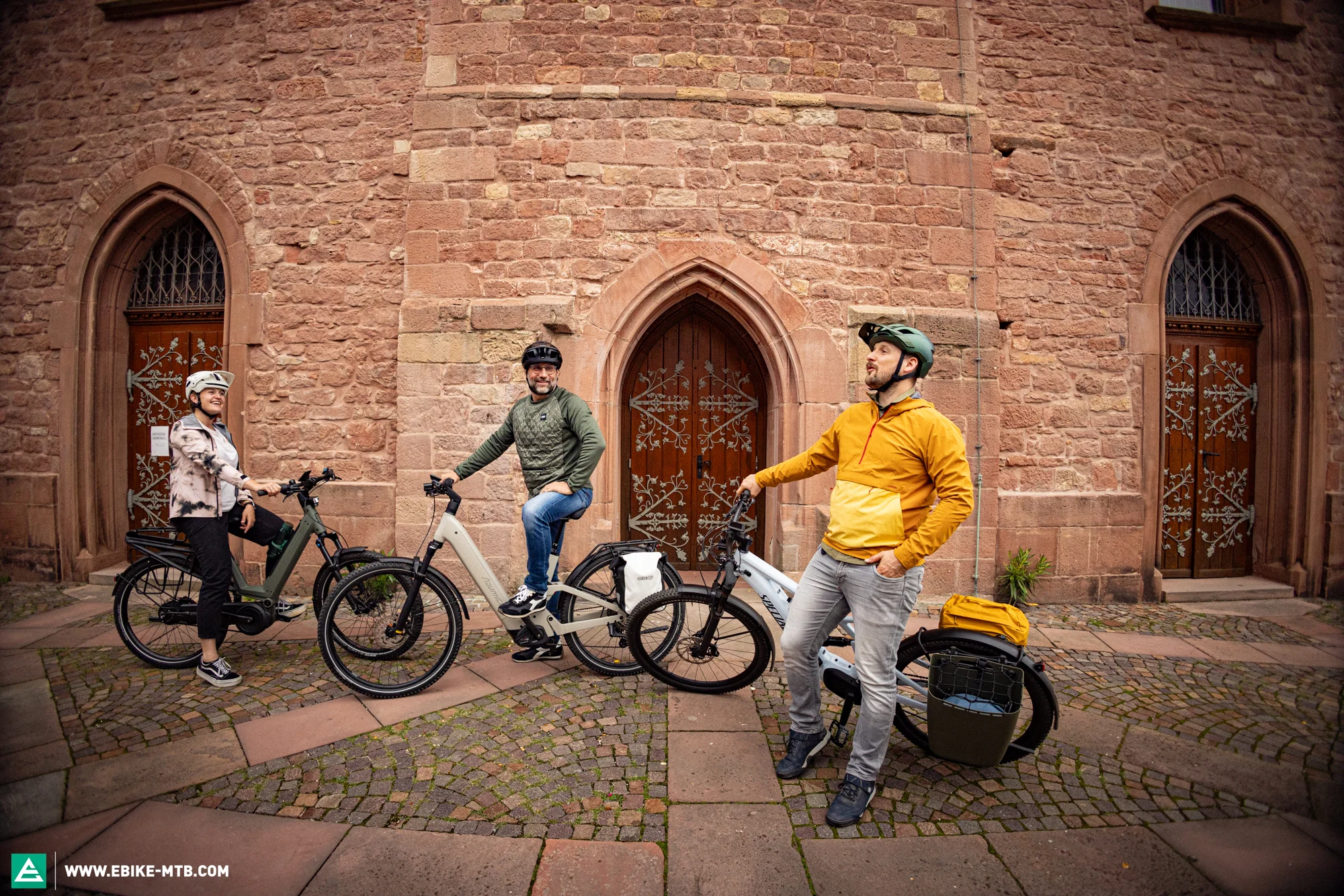
All bikes in test:
ADVANCED Trekking Pro FS Wave | BULLS Vuca EVO FSX 1 | CENTURION Country R3000i LX | CONWAY CAIRON SUV FS 7.7 | FLYER Goroc TR:X 8.63 | GIANT Stormguard E+ 1 | Moustache J. All | Riese & Müller Delite 4 GT Touring | ROTWILD R. C1000 TOUR | Specialized Turbo Tero X 6.0
Did you enjoy this article? If so, we would be stoked if you decide to support us with a monthly contribution. By becoming a supporter of E-MOUNTAINBIKE, you will help secure a sustainable future for high-quality cycling journalism. Click here to learn more.
Words: Antonia Feder Photos: Jan Richter, Robin Schmitt, Antonia Feder




